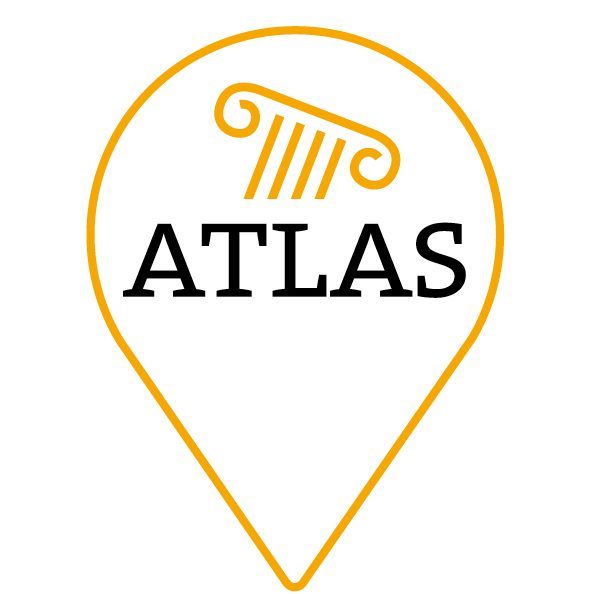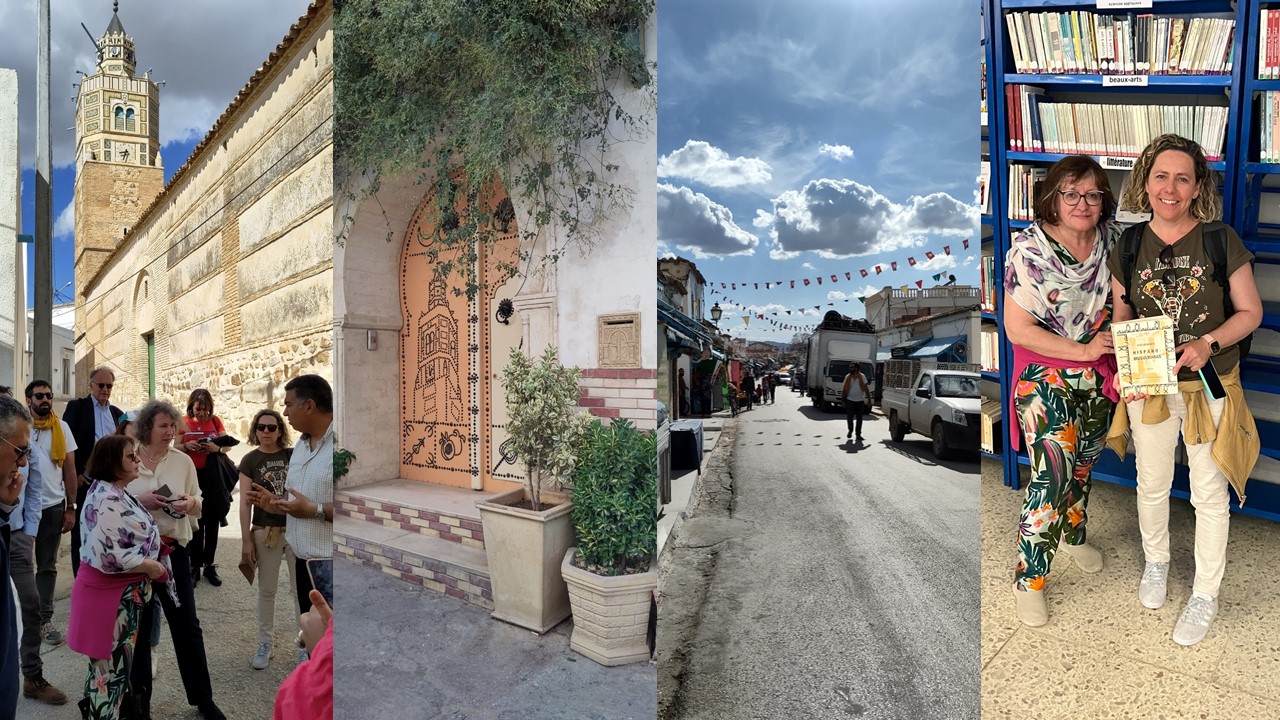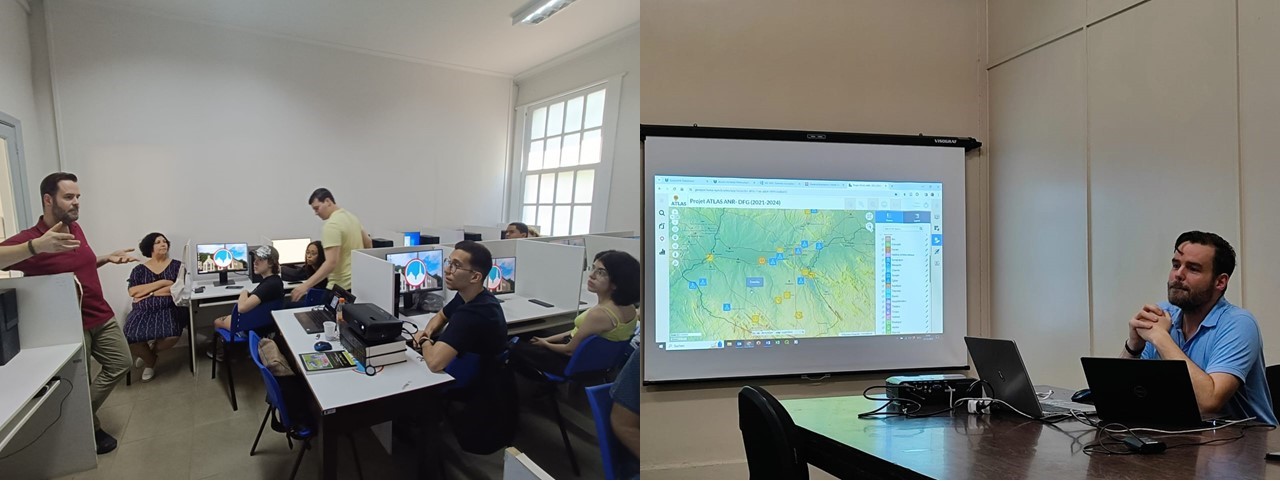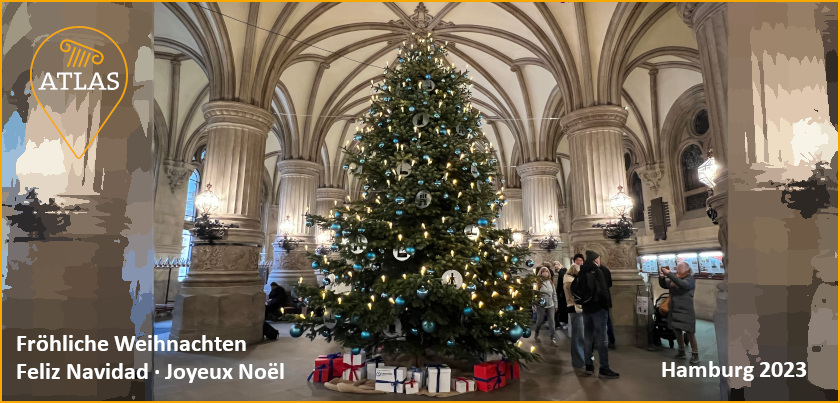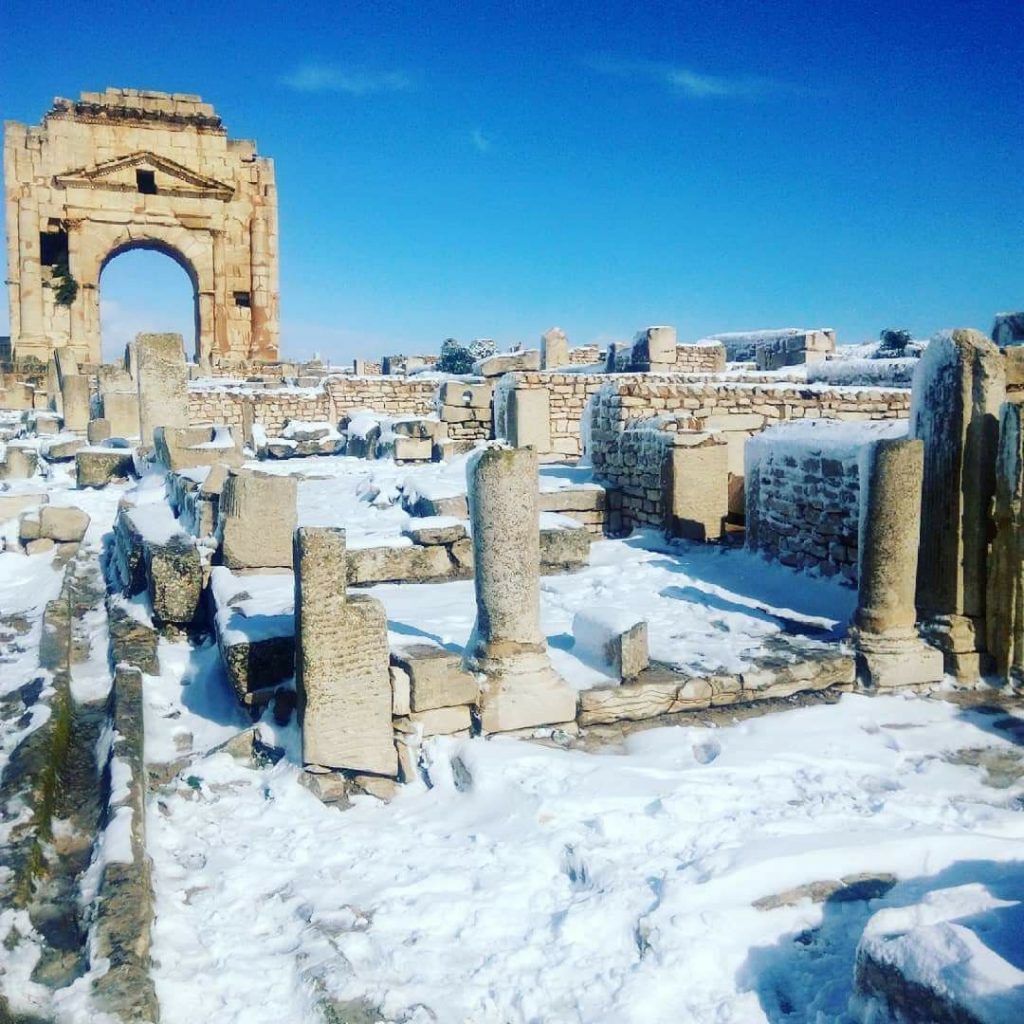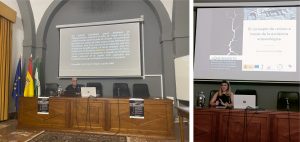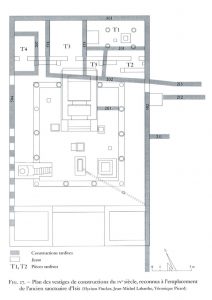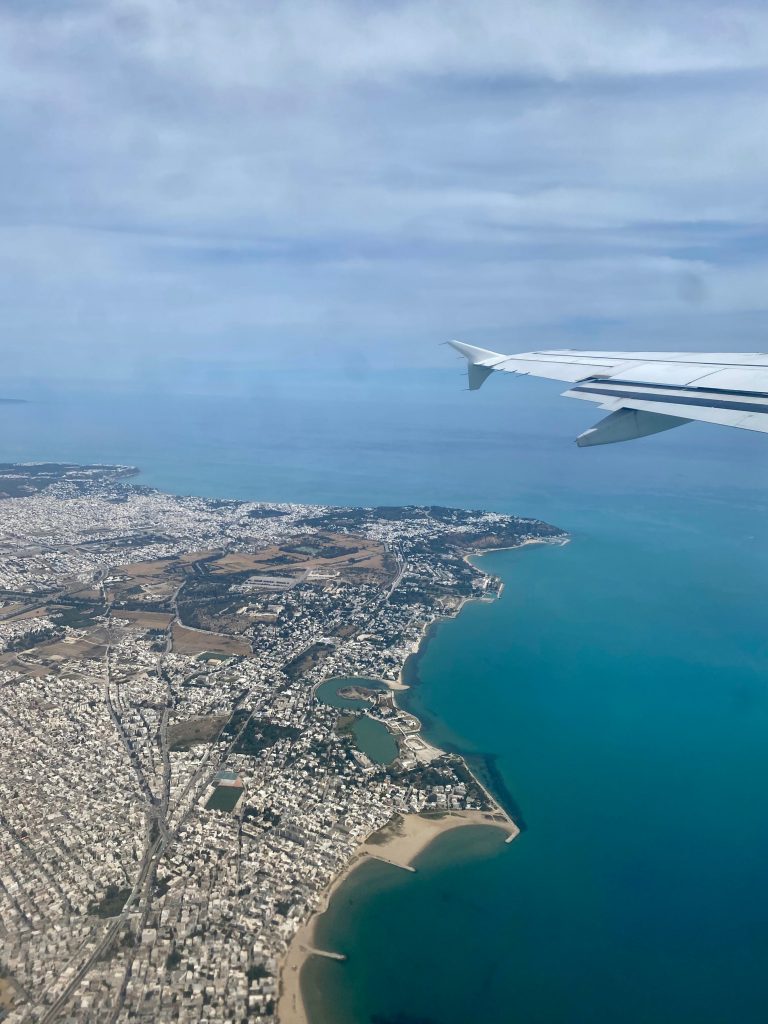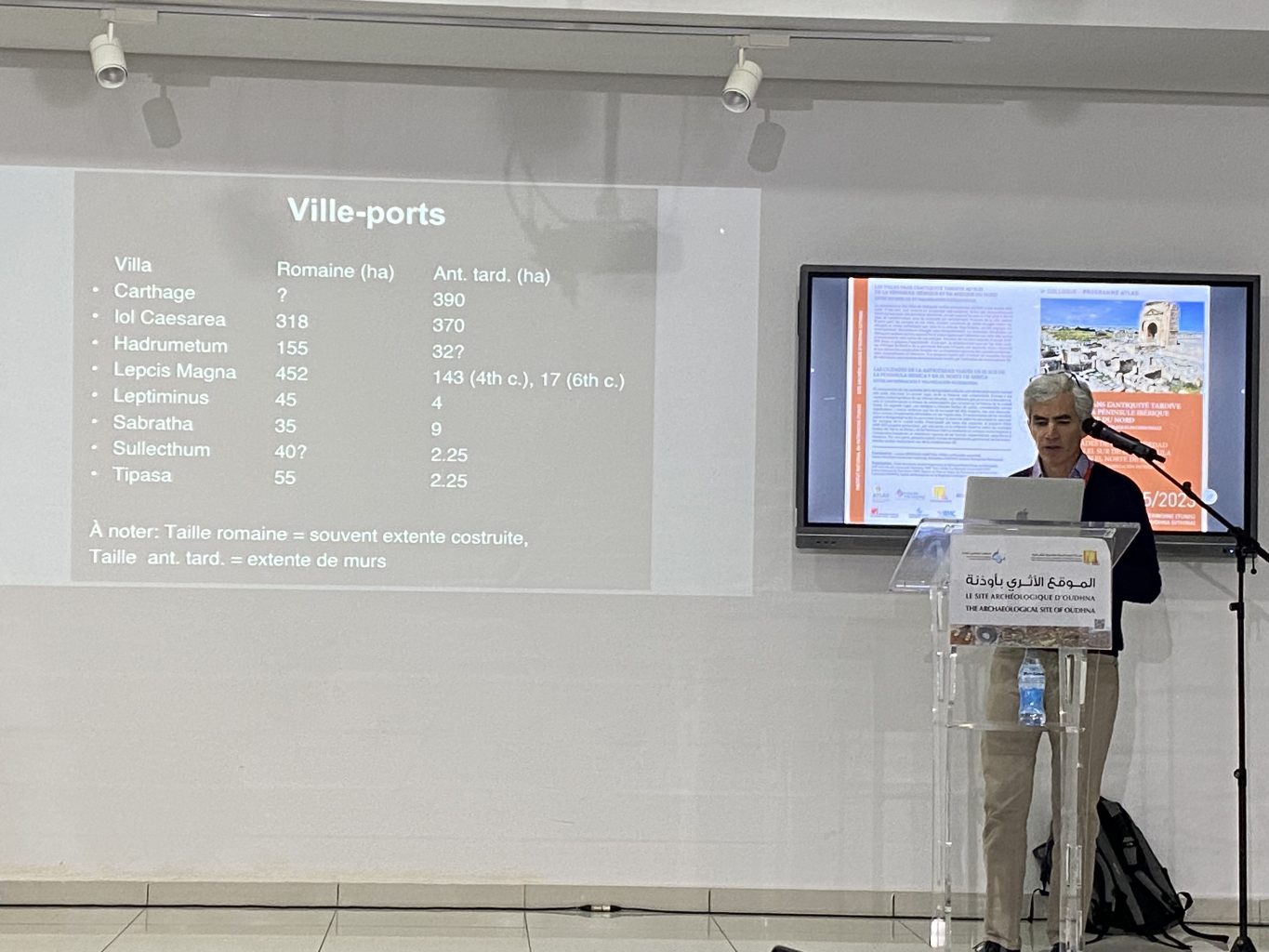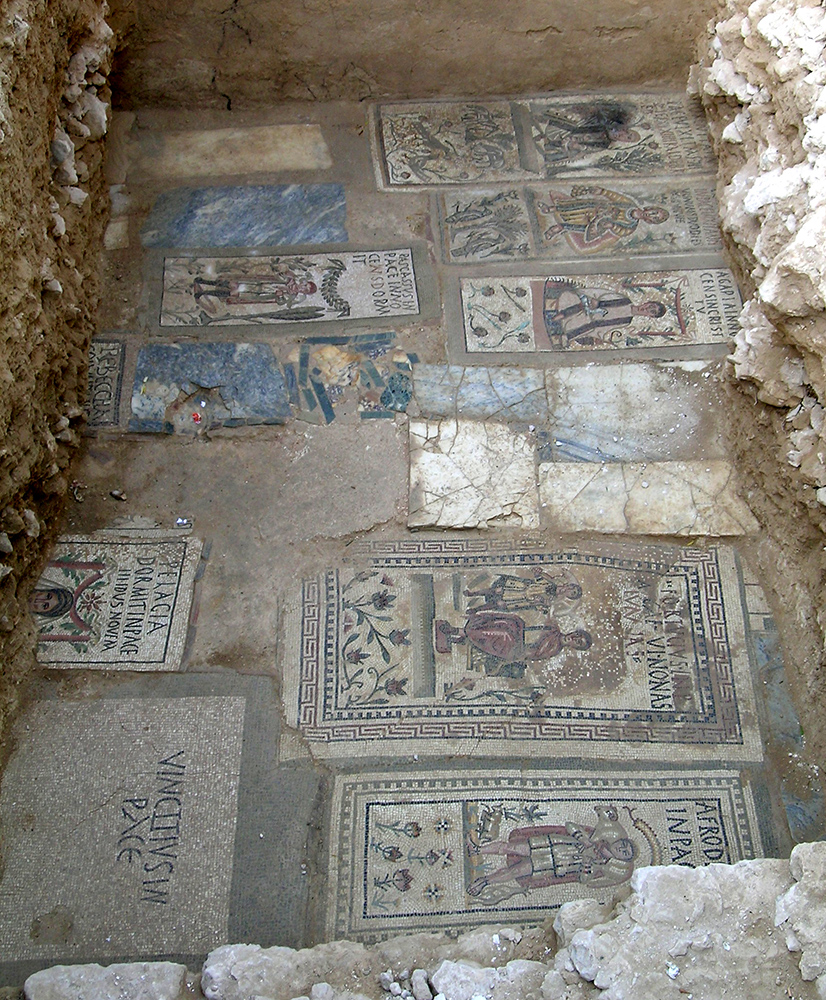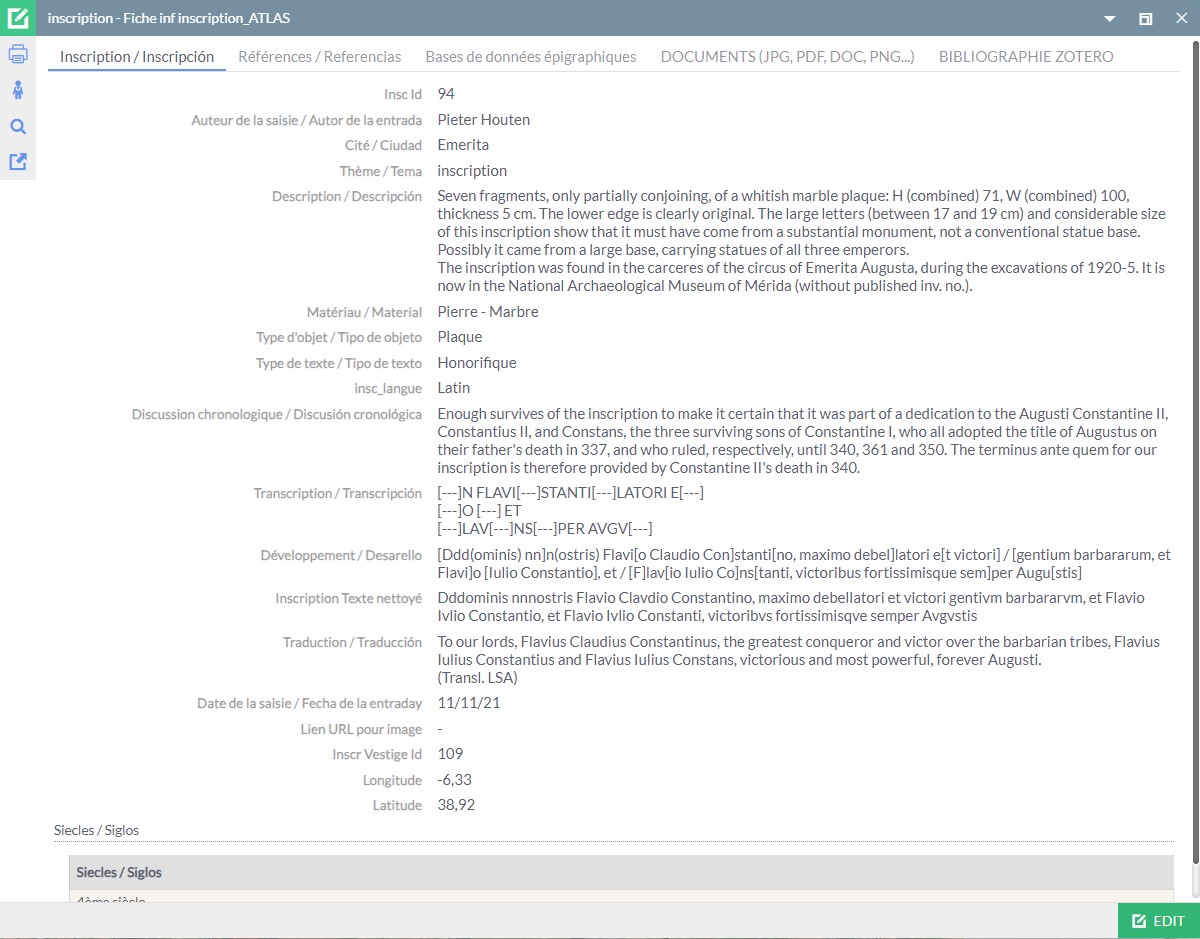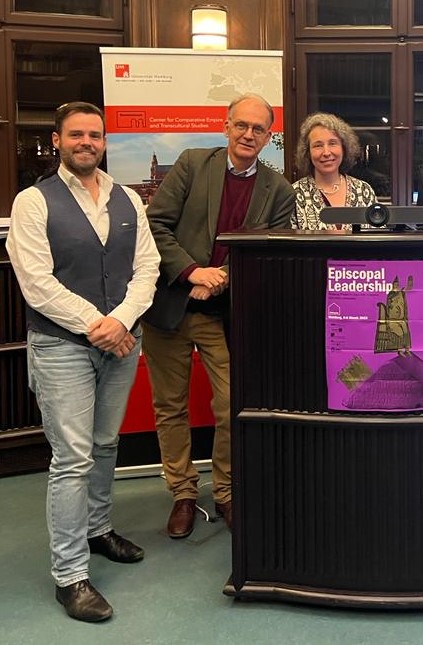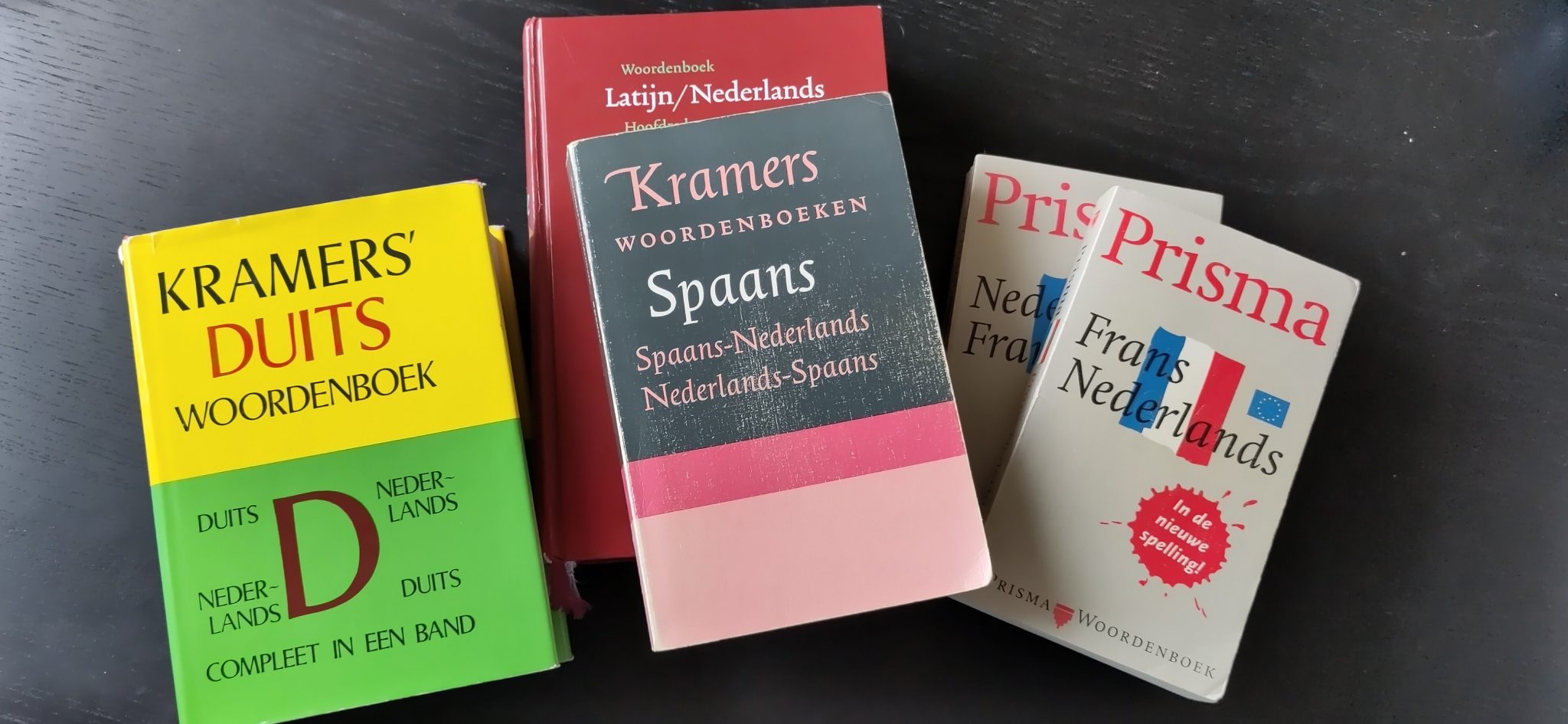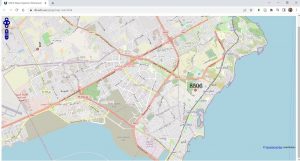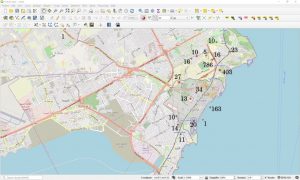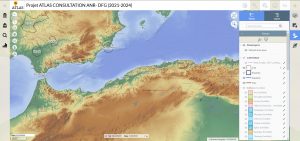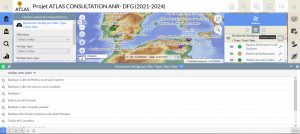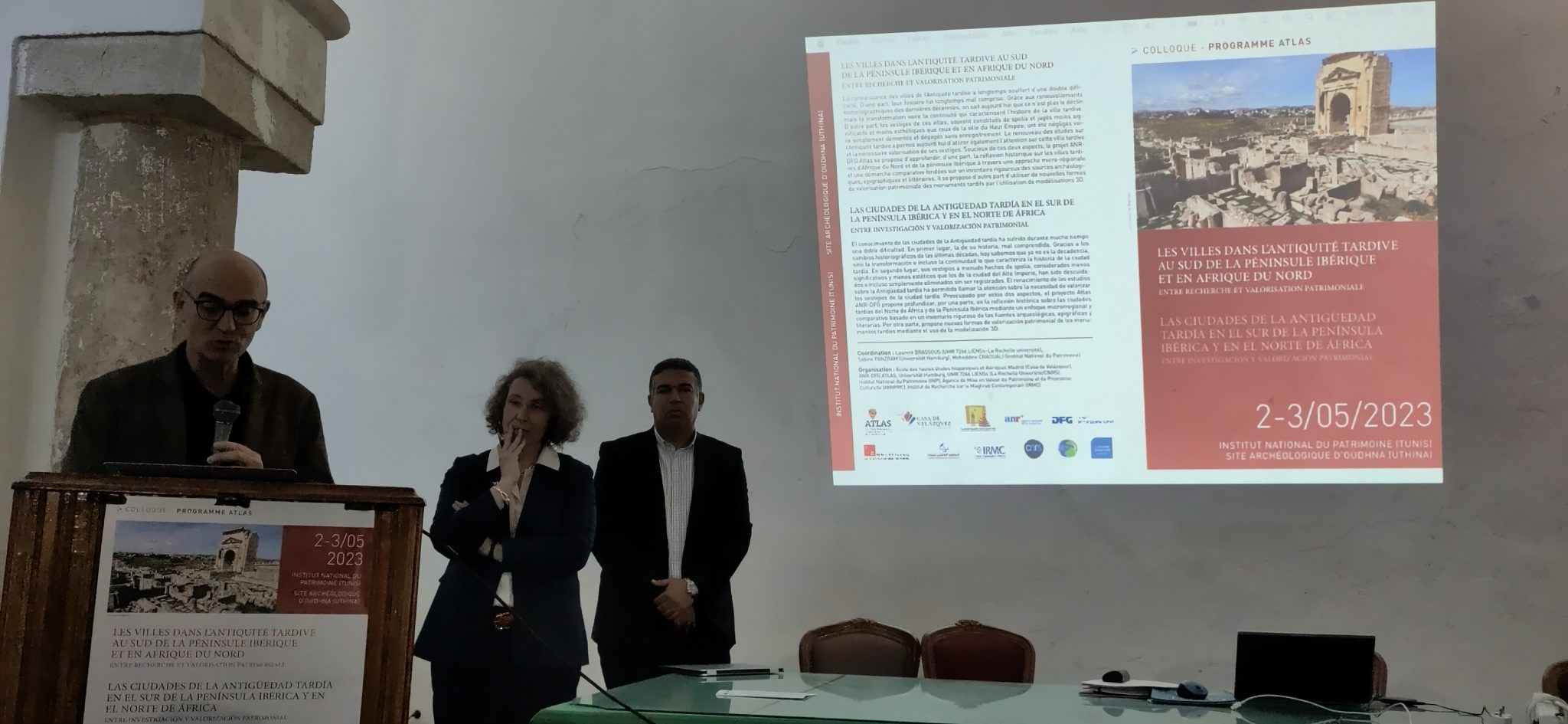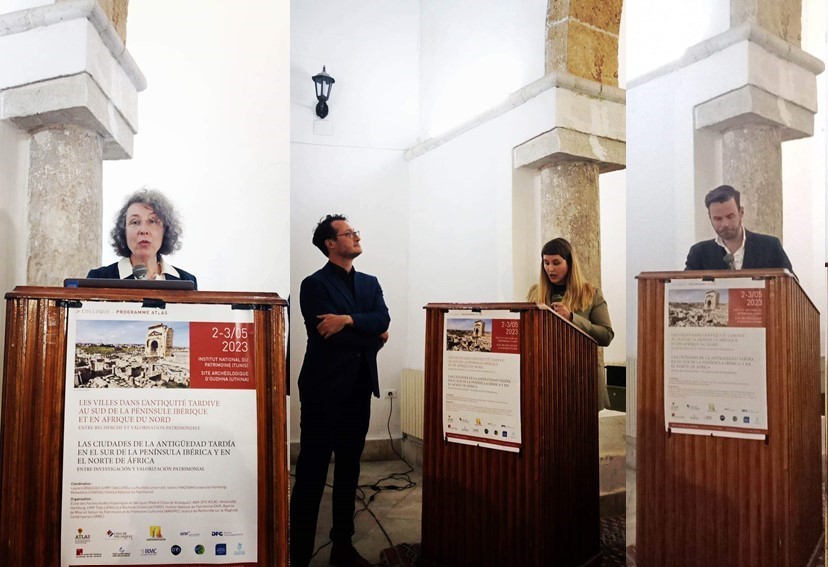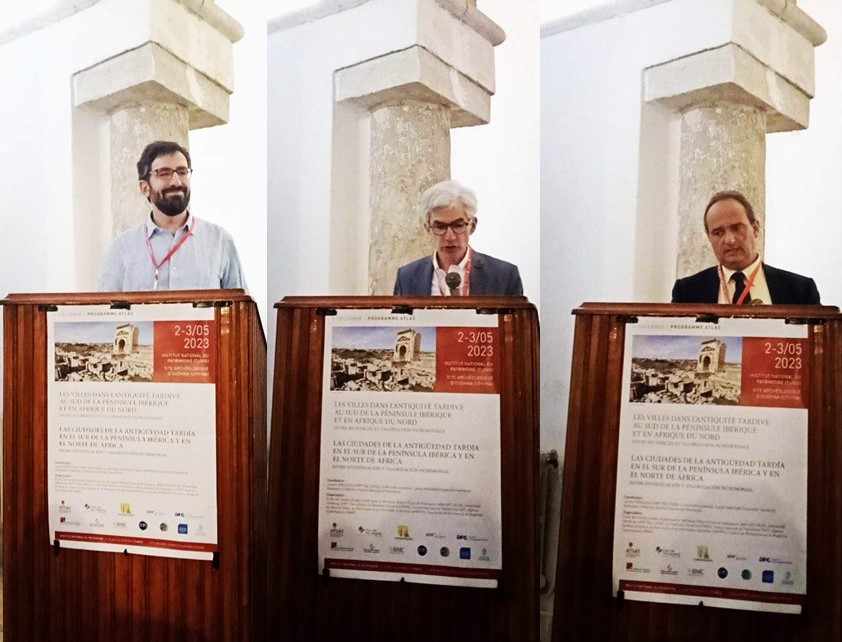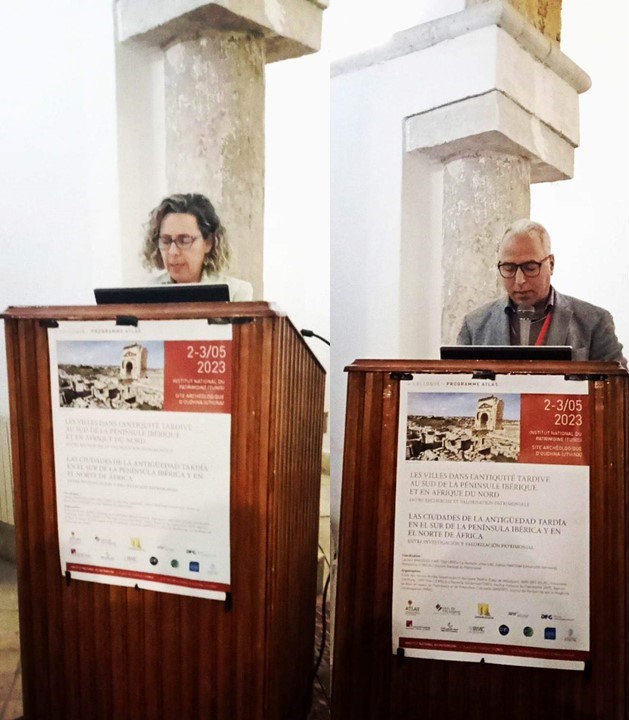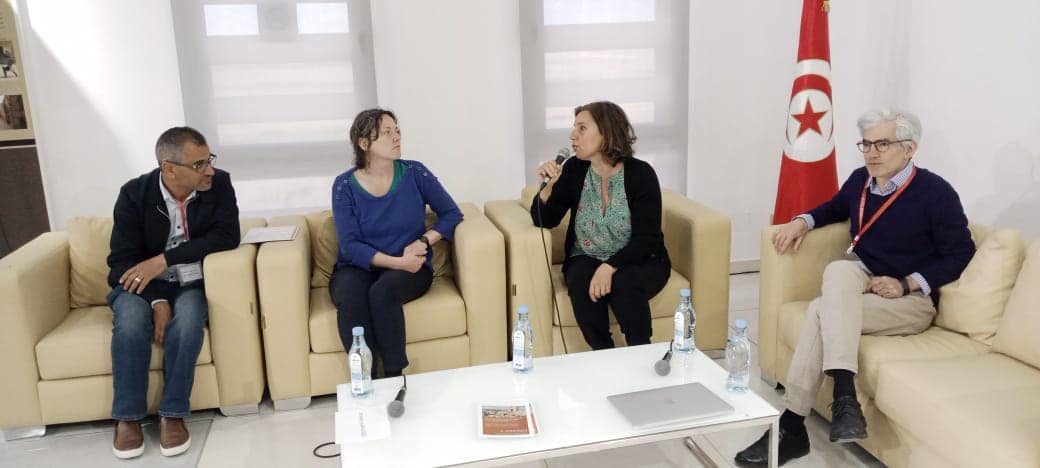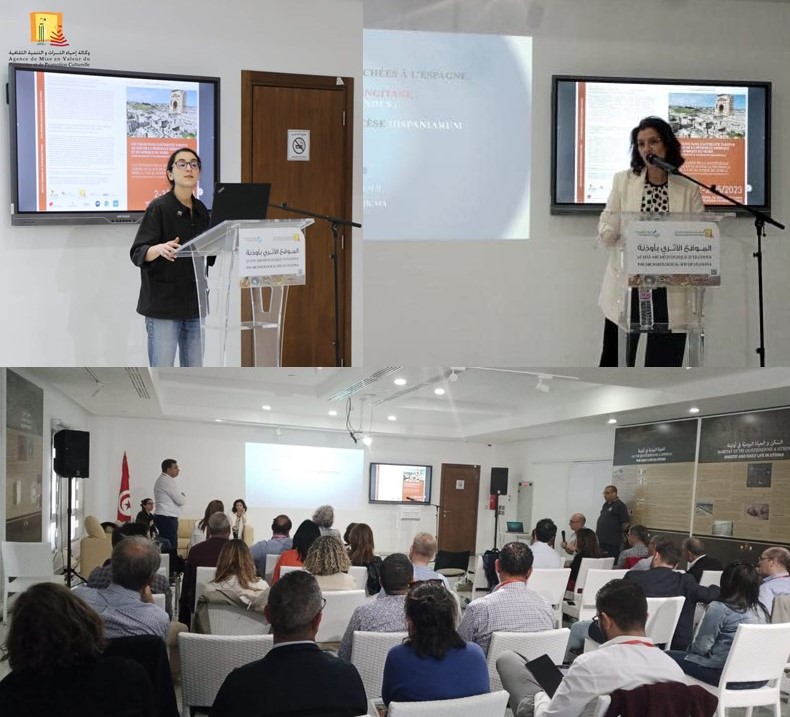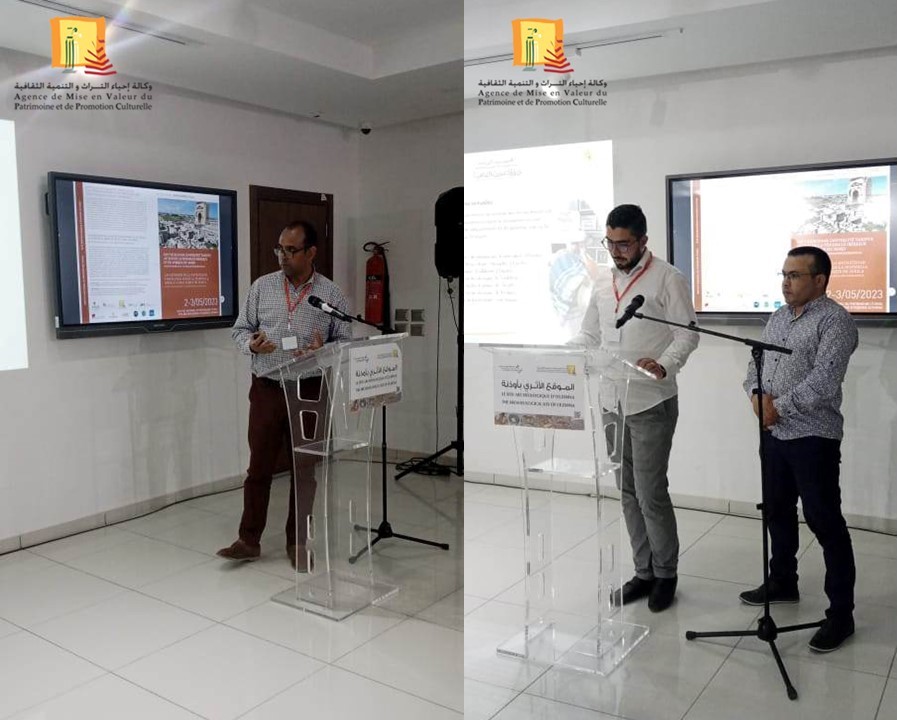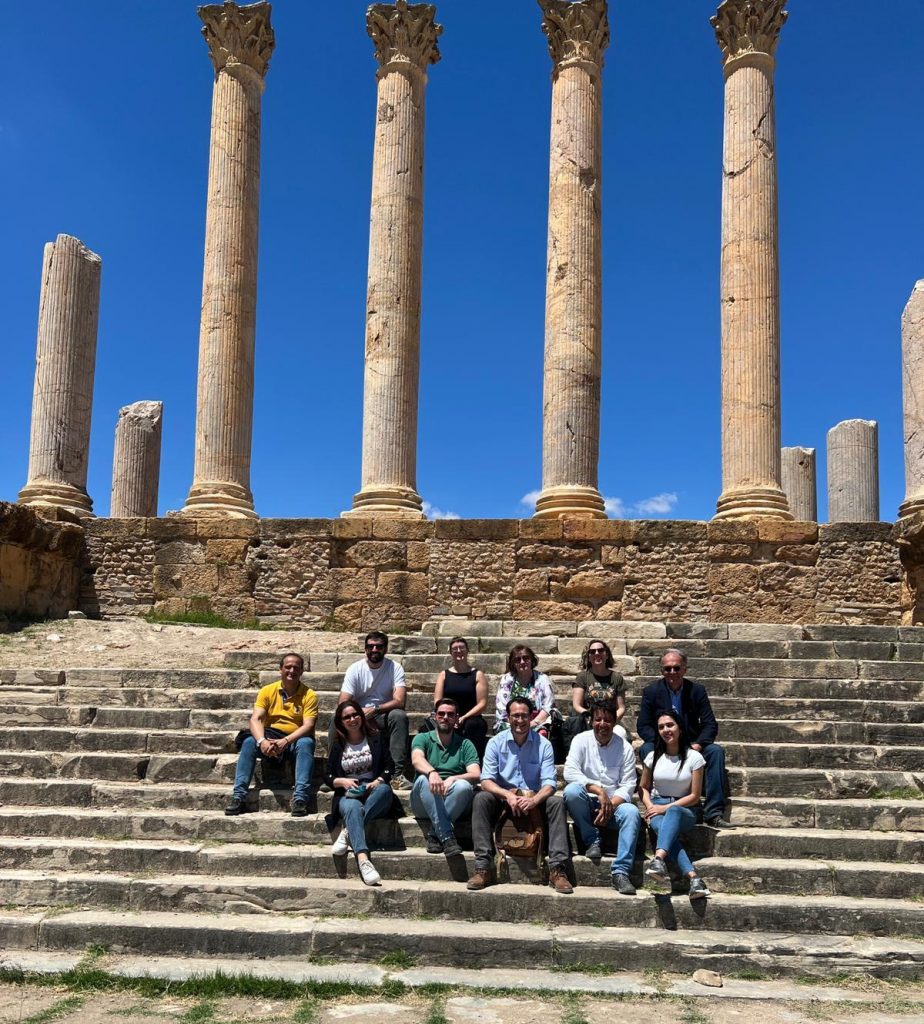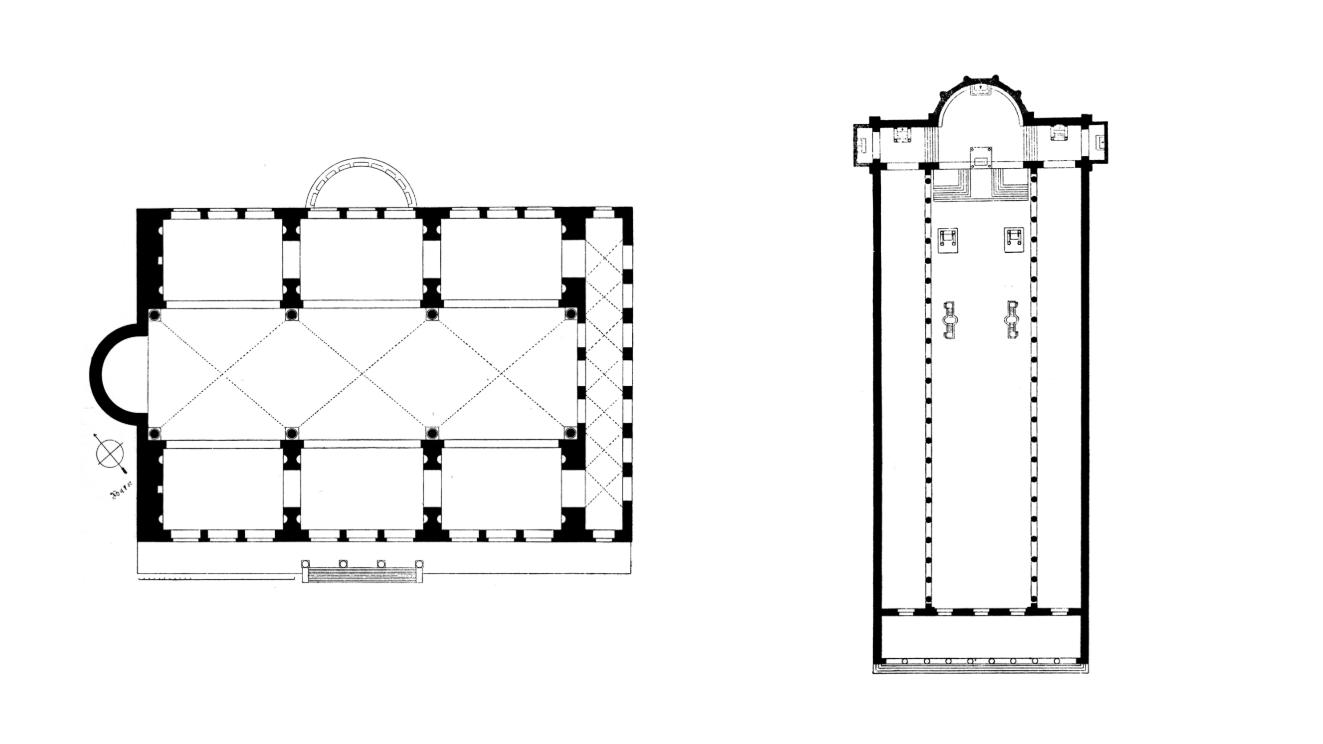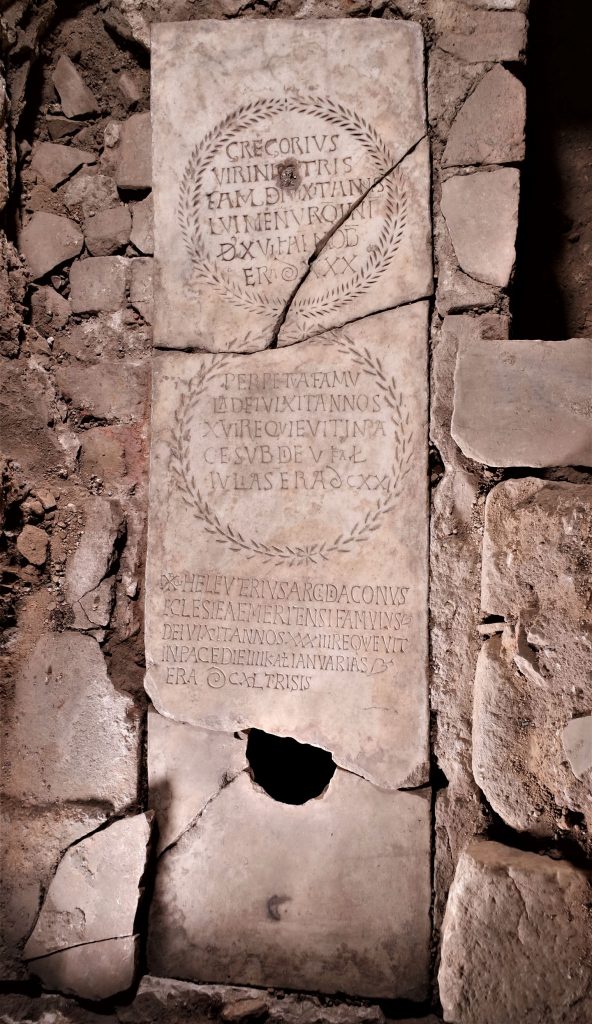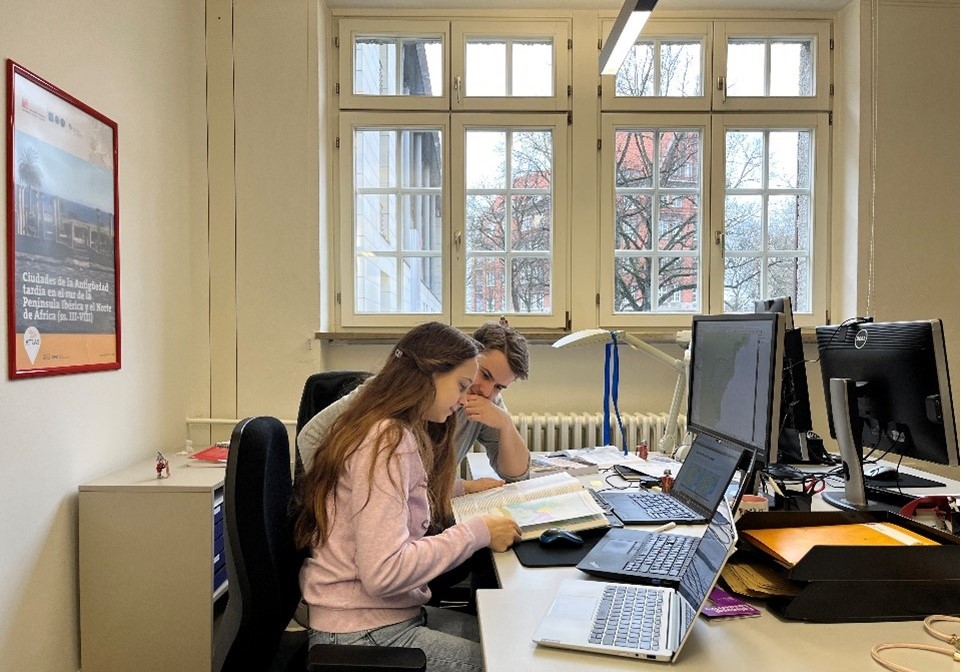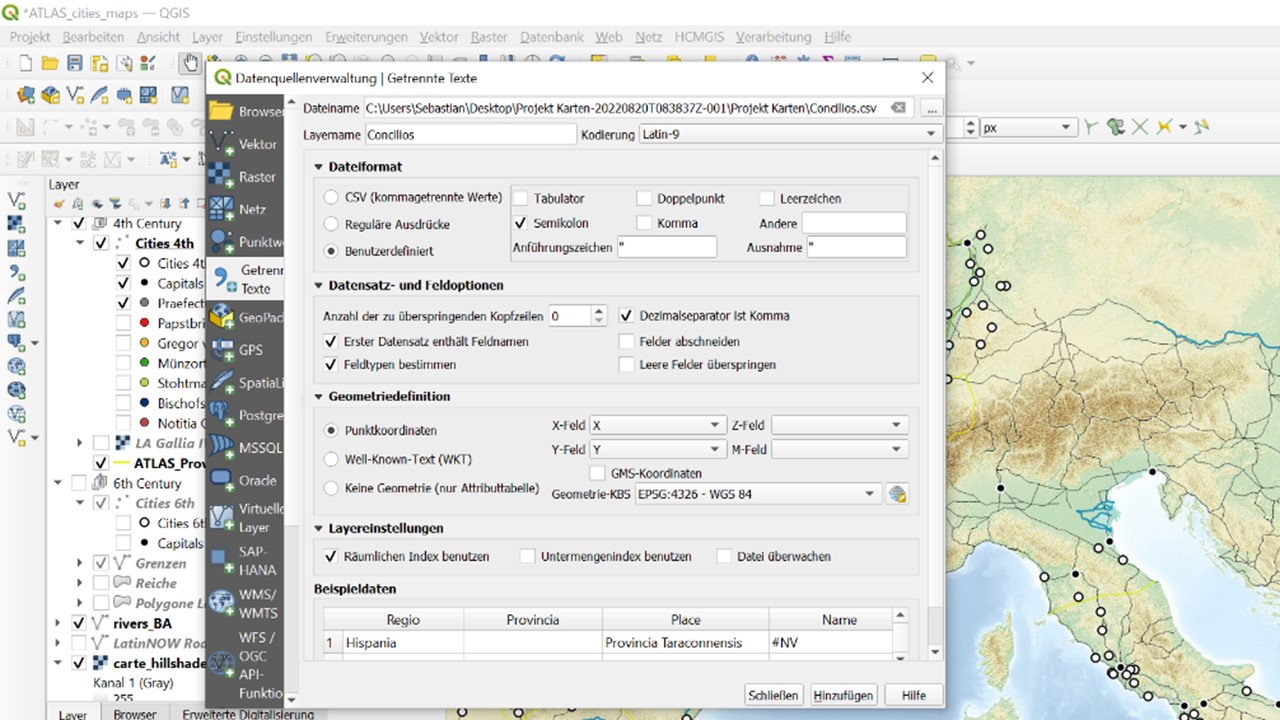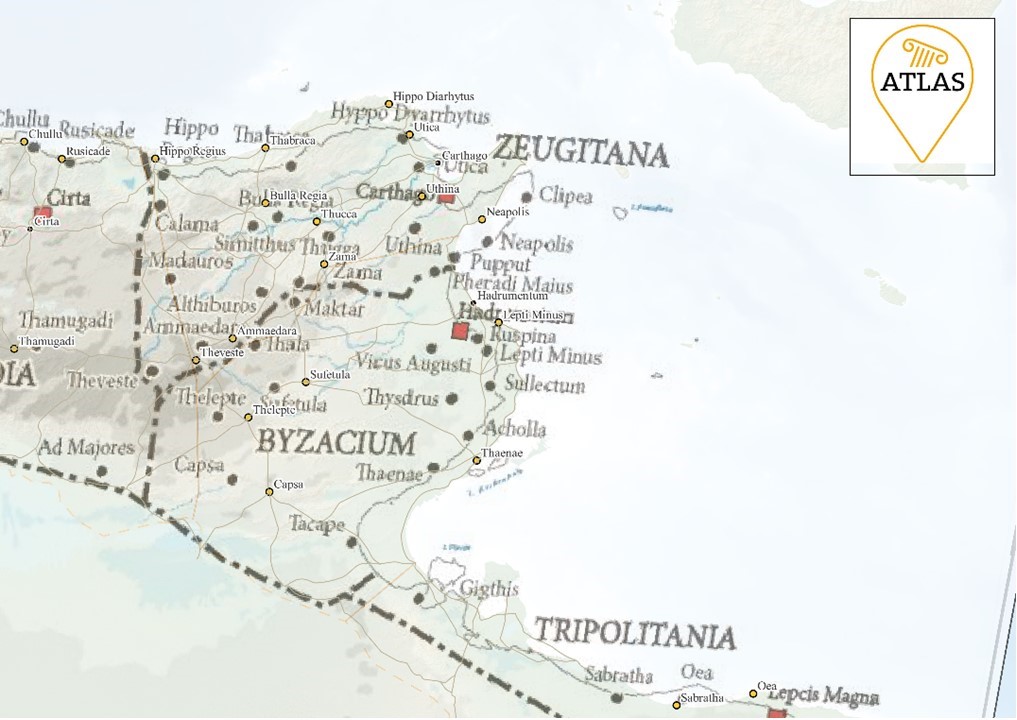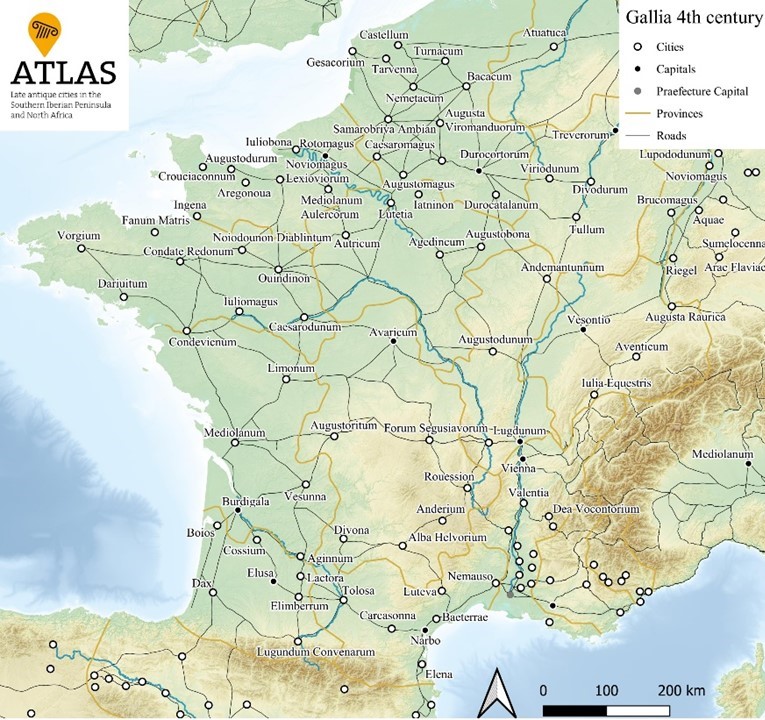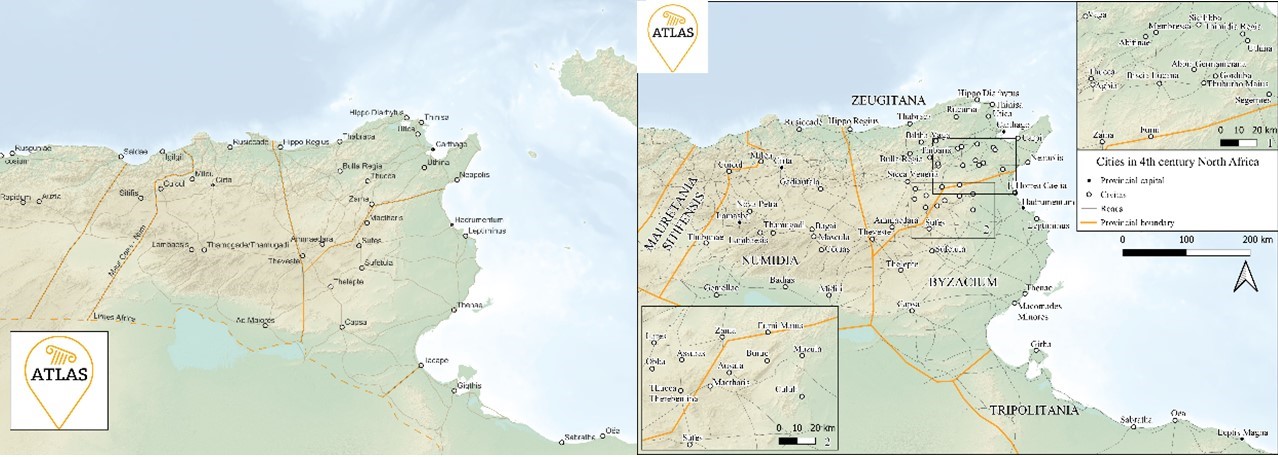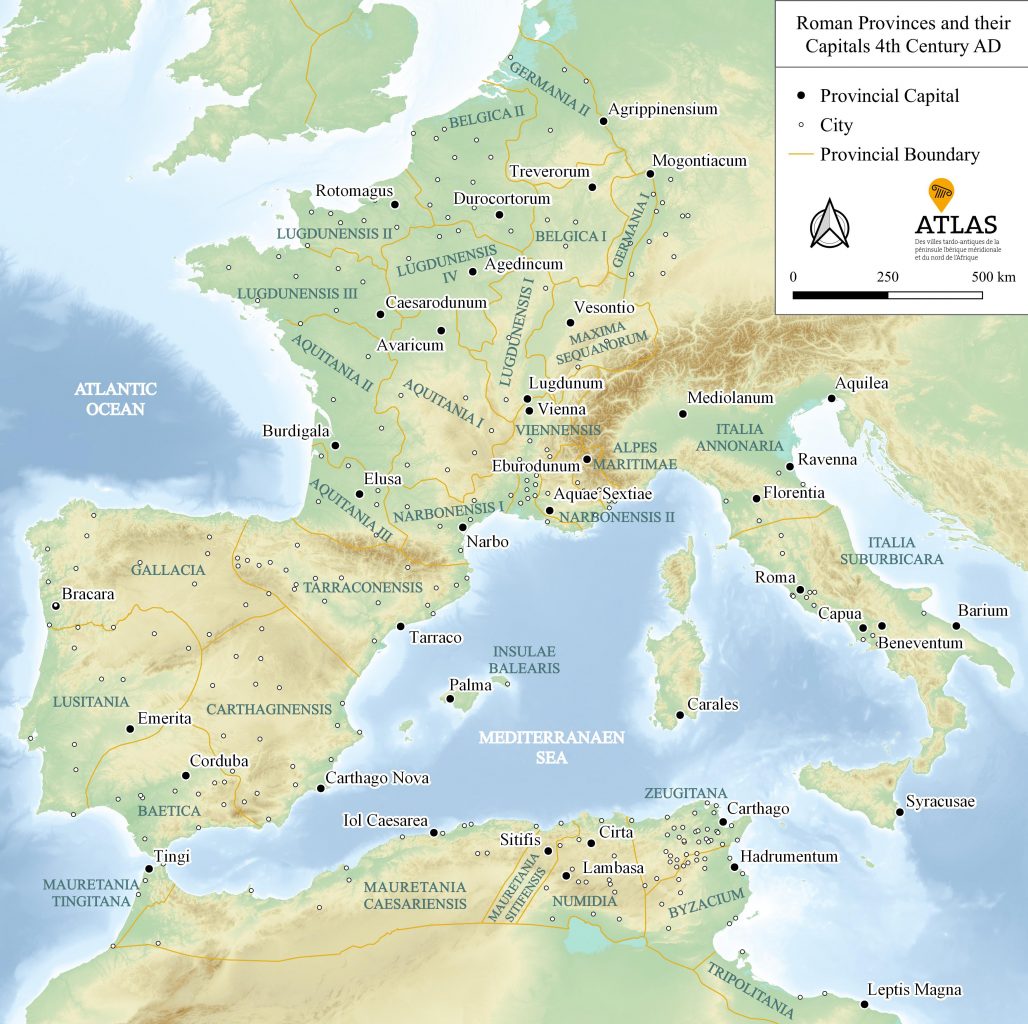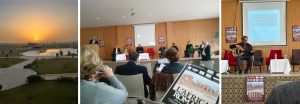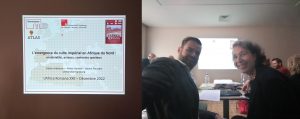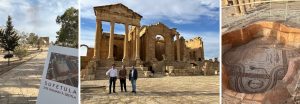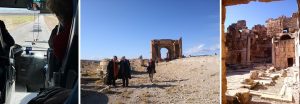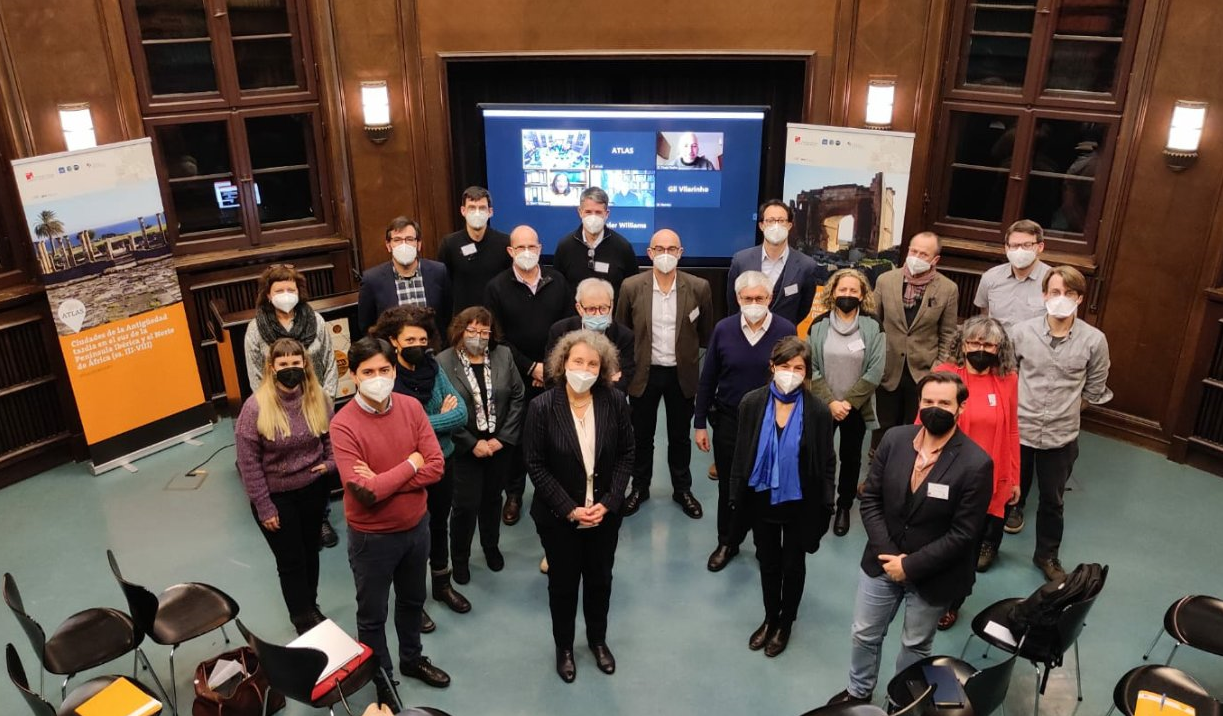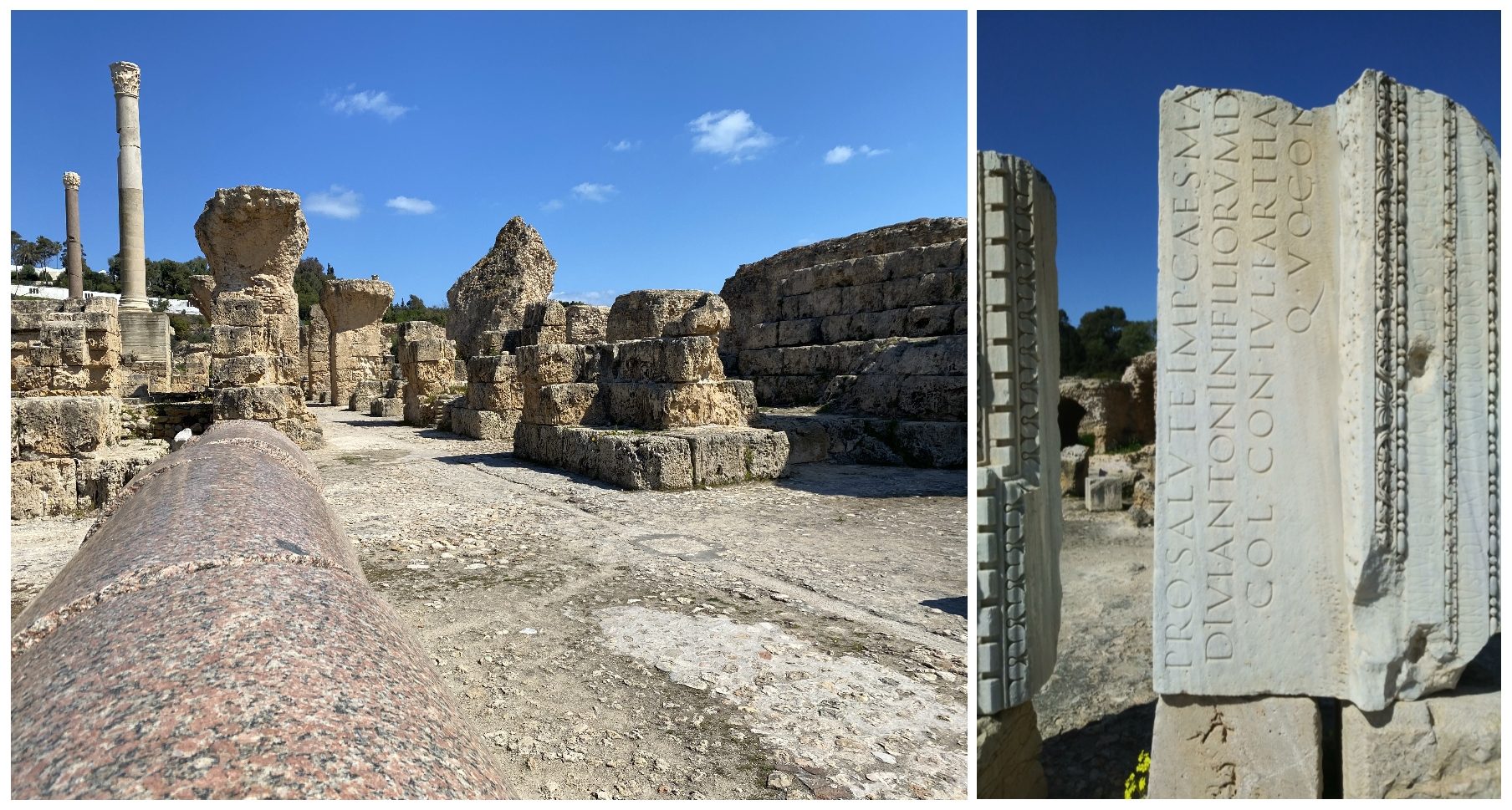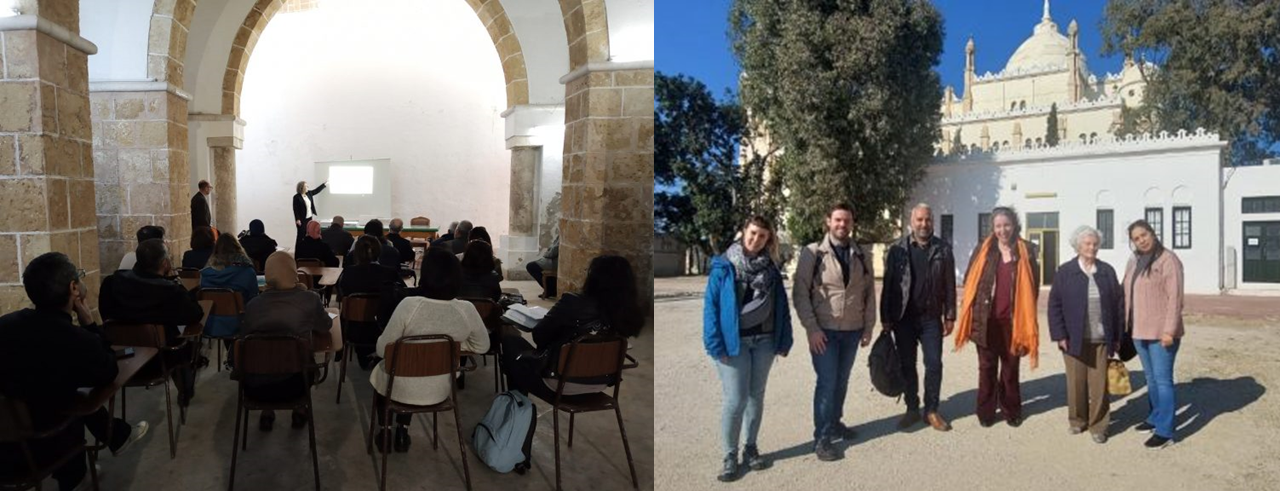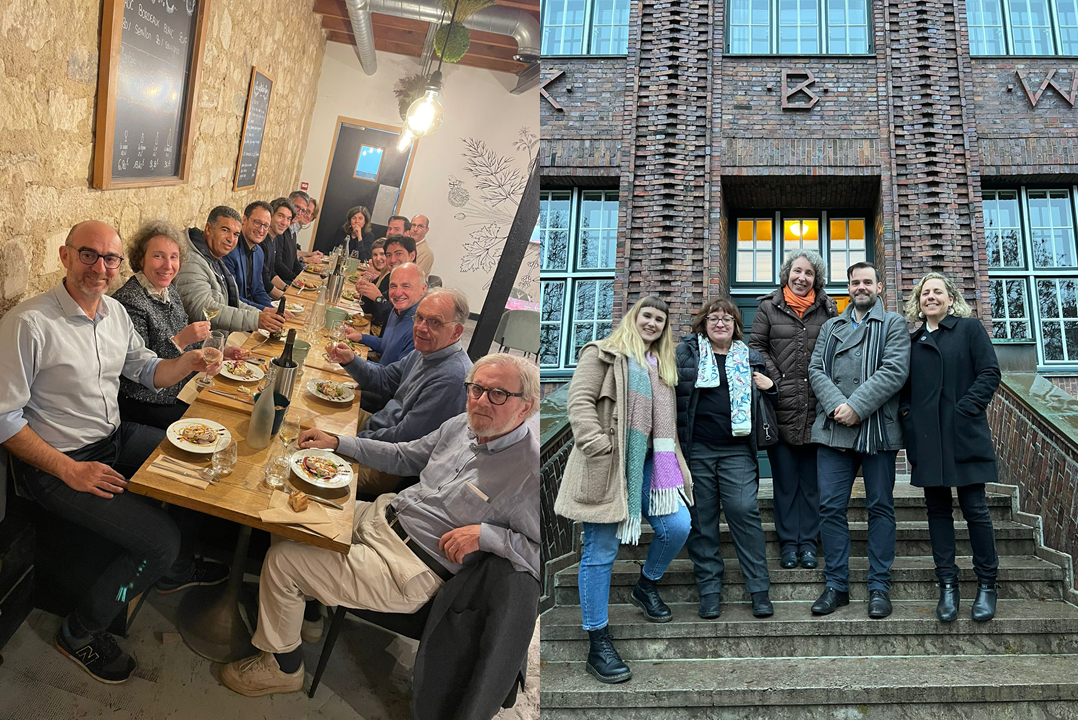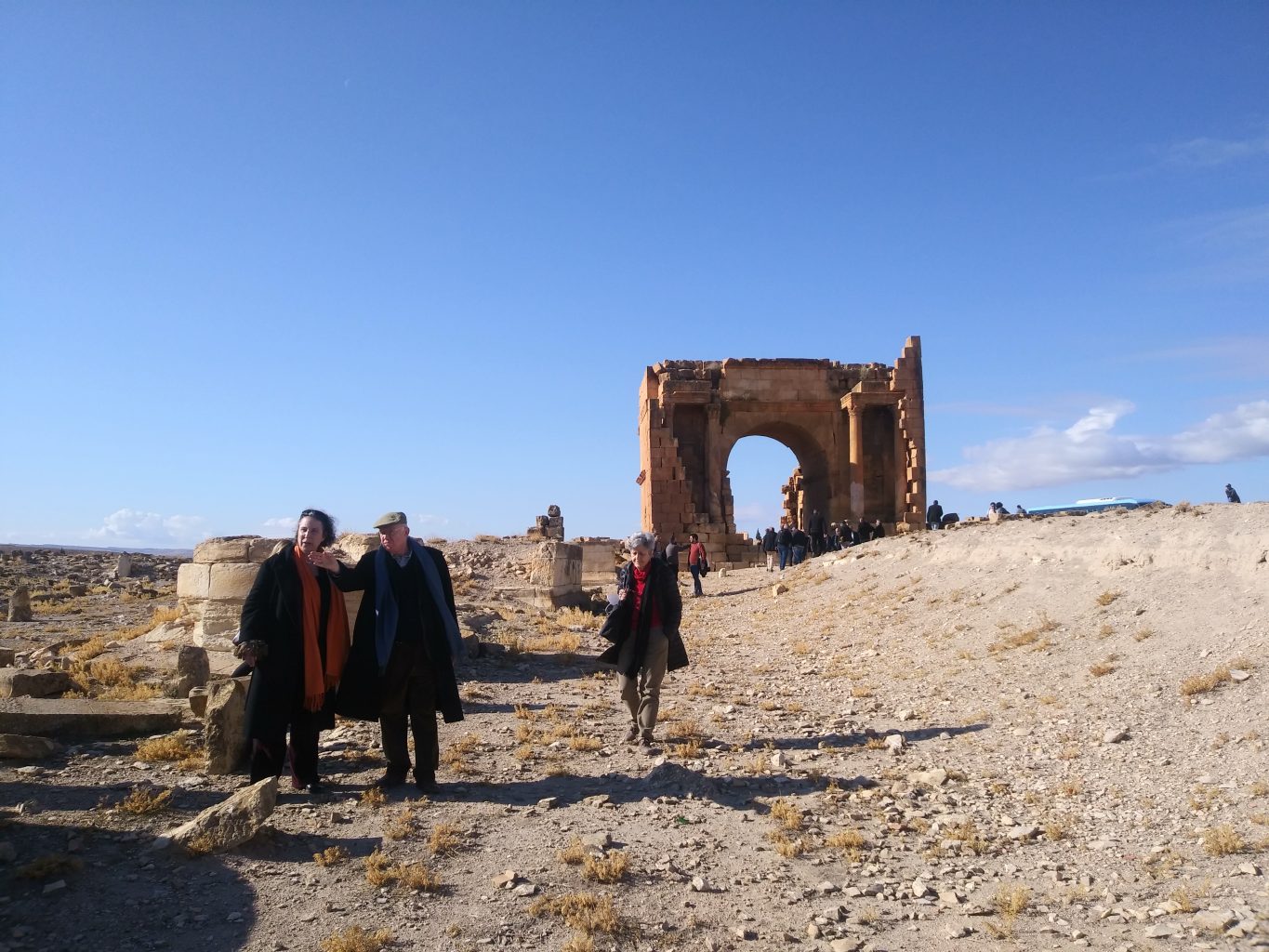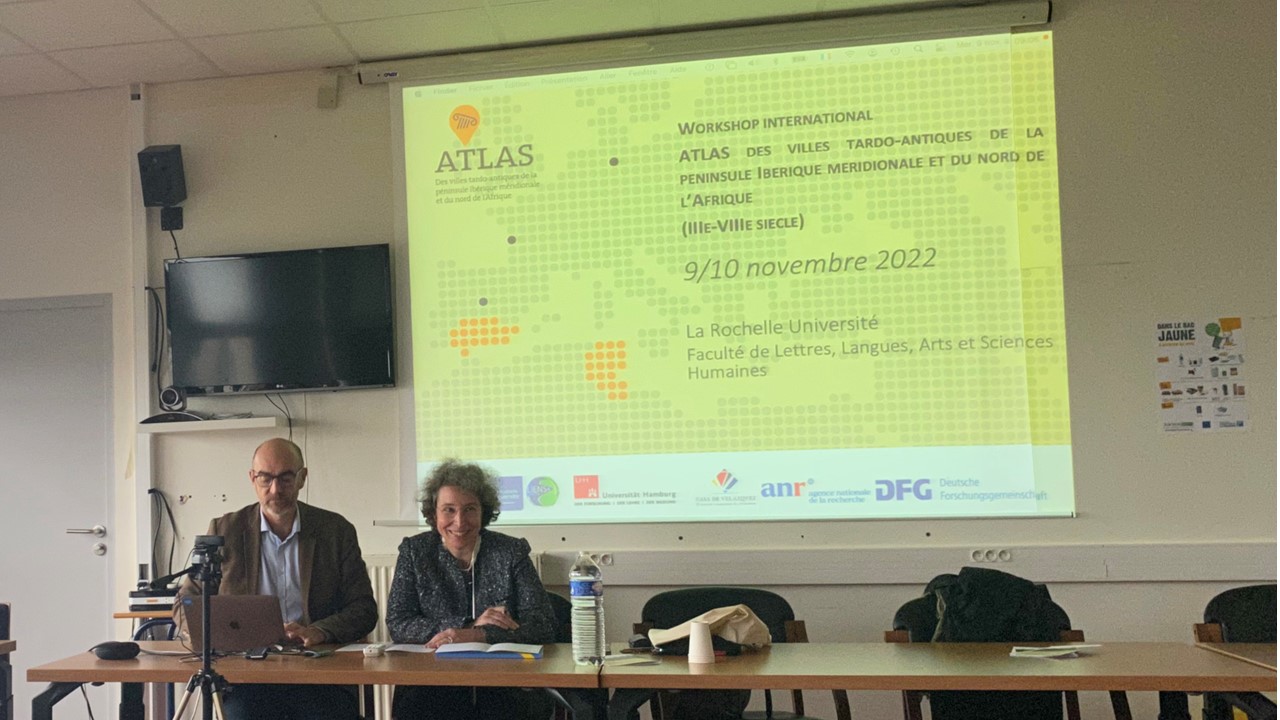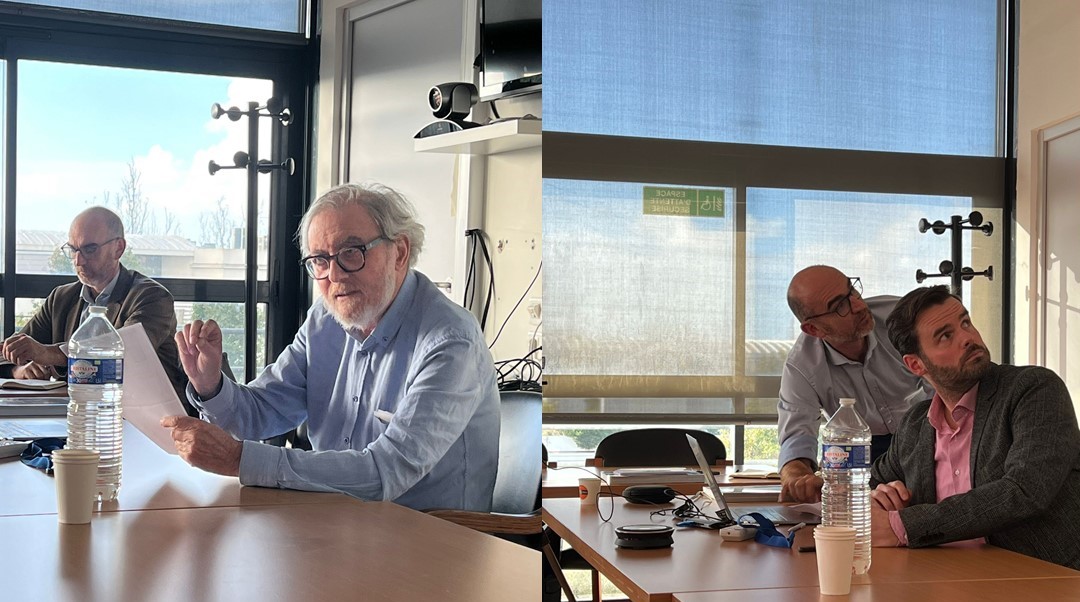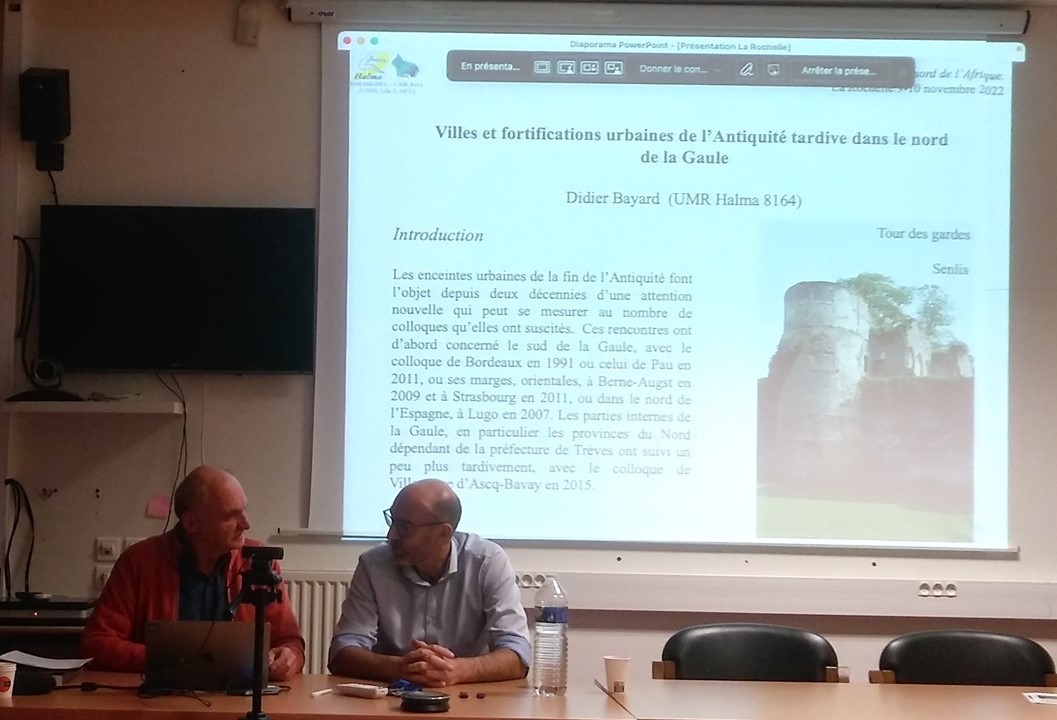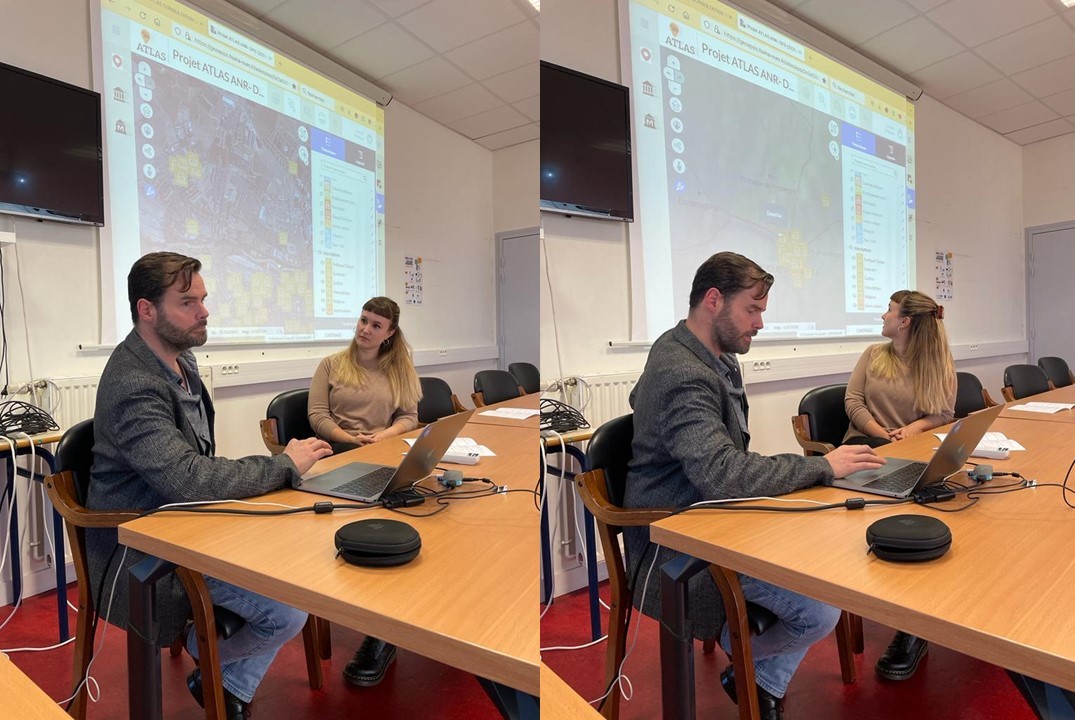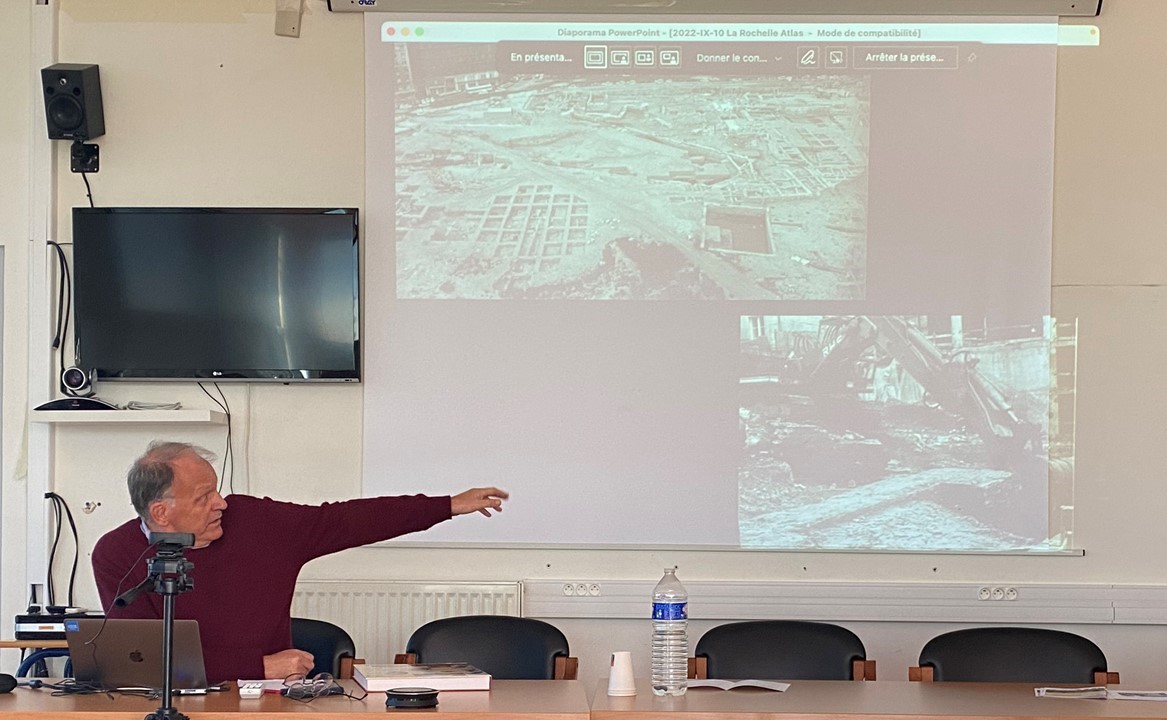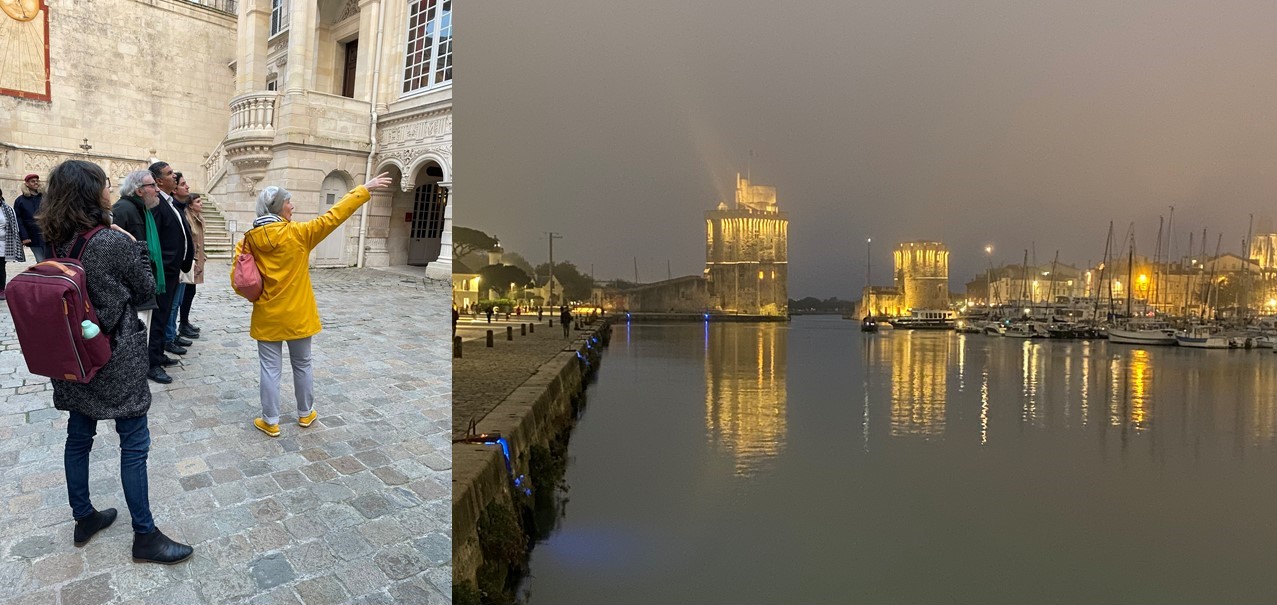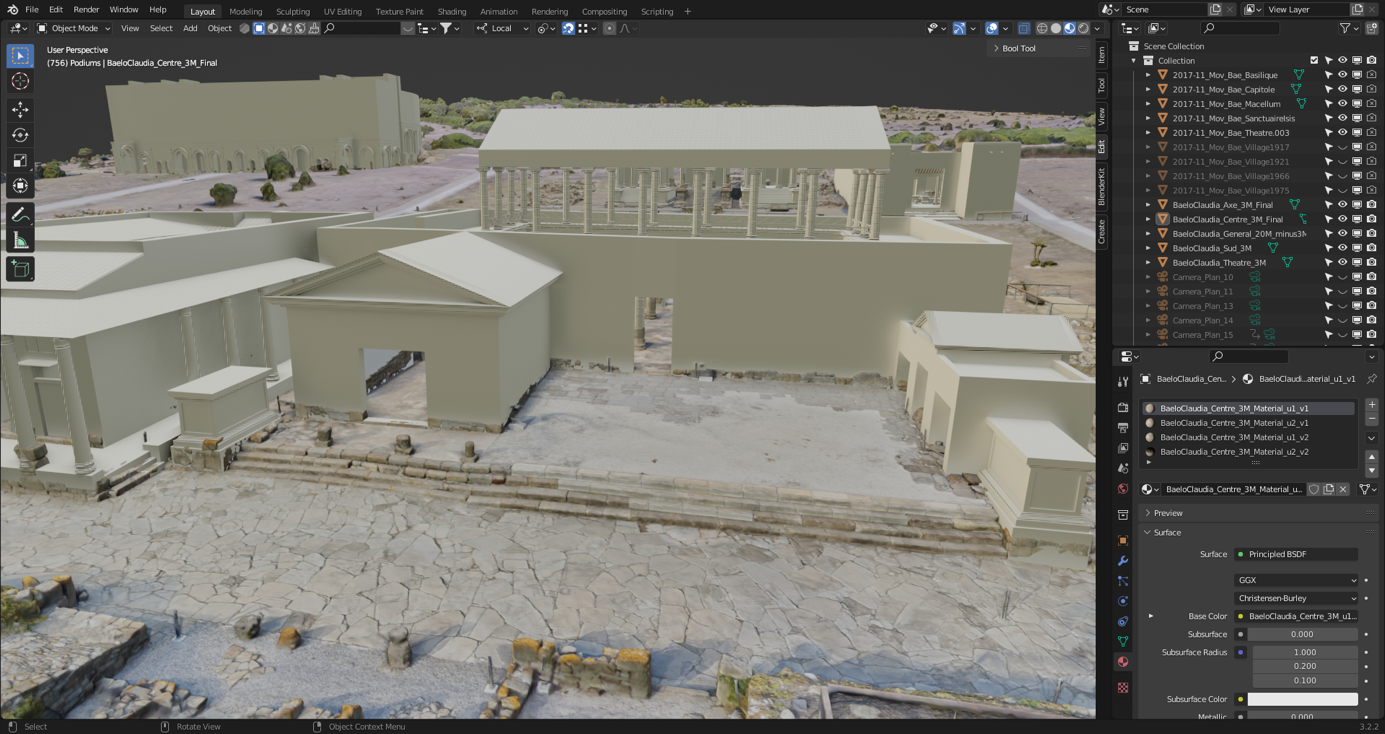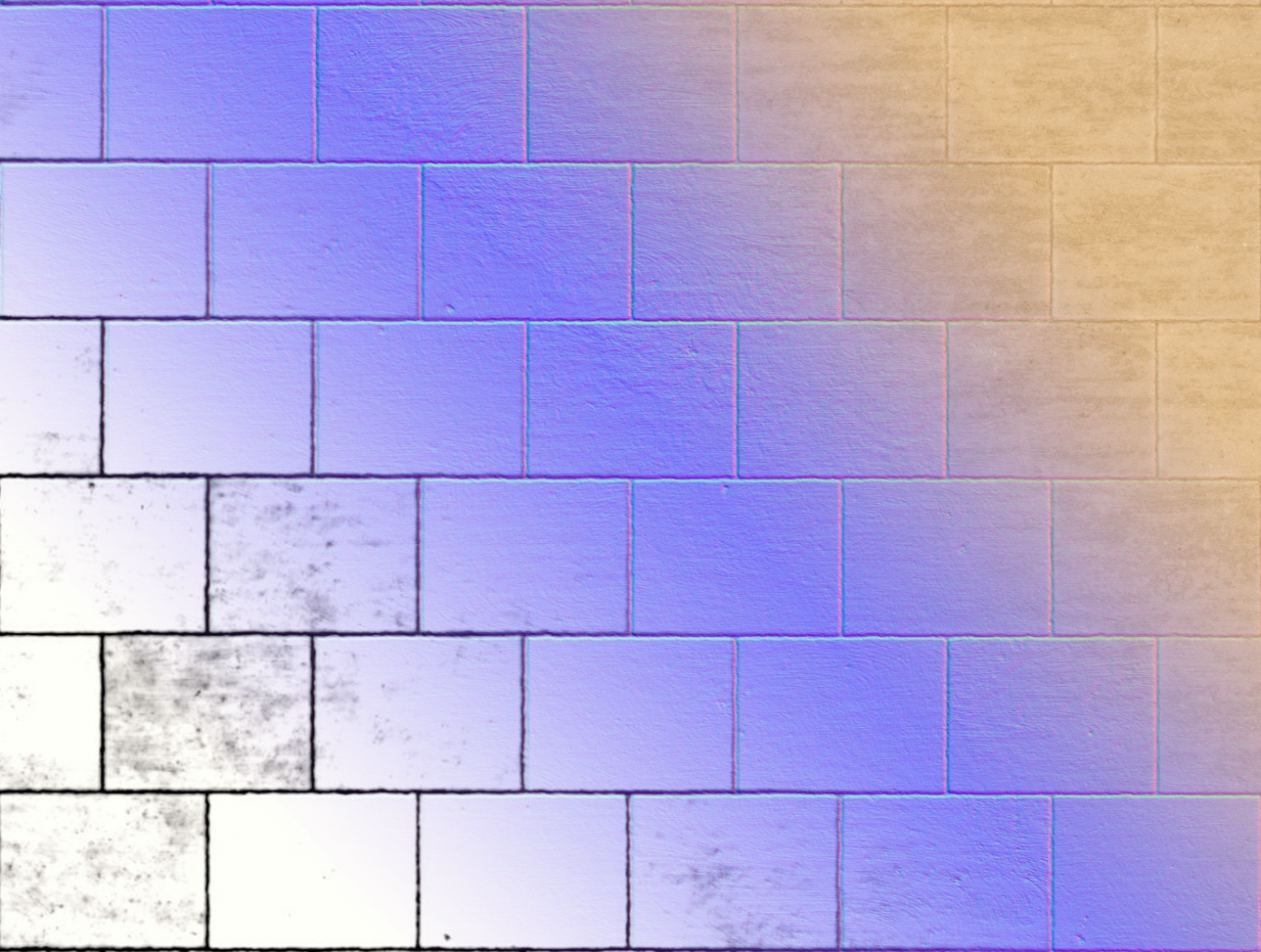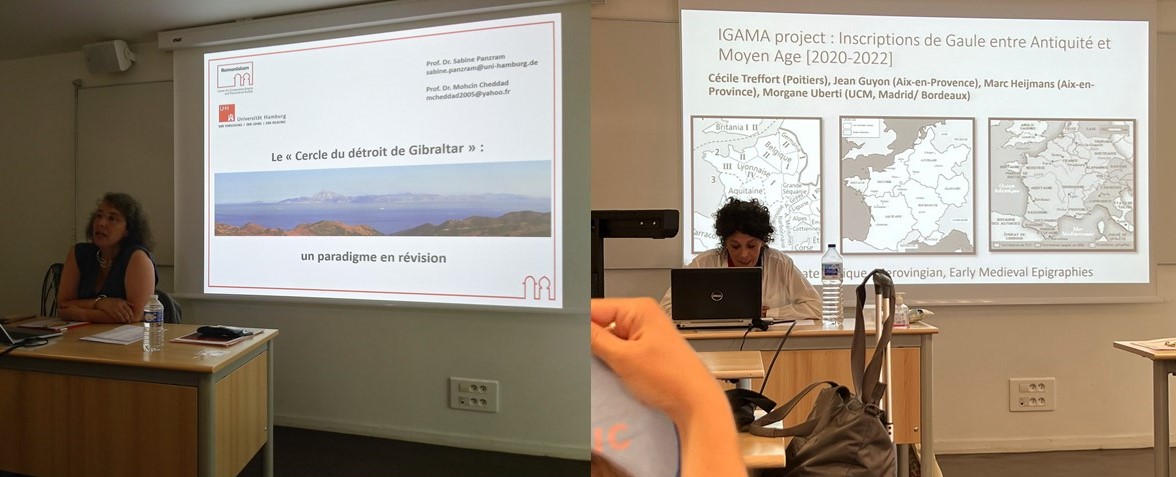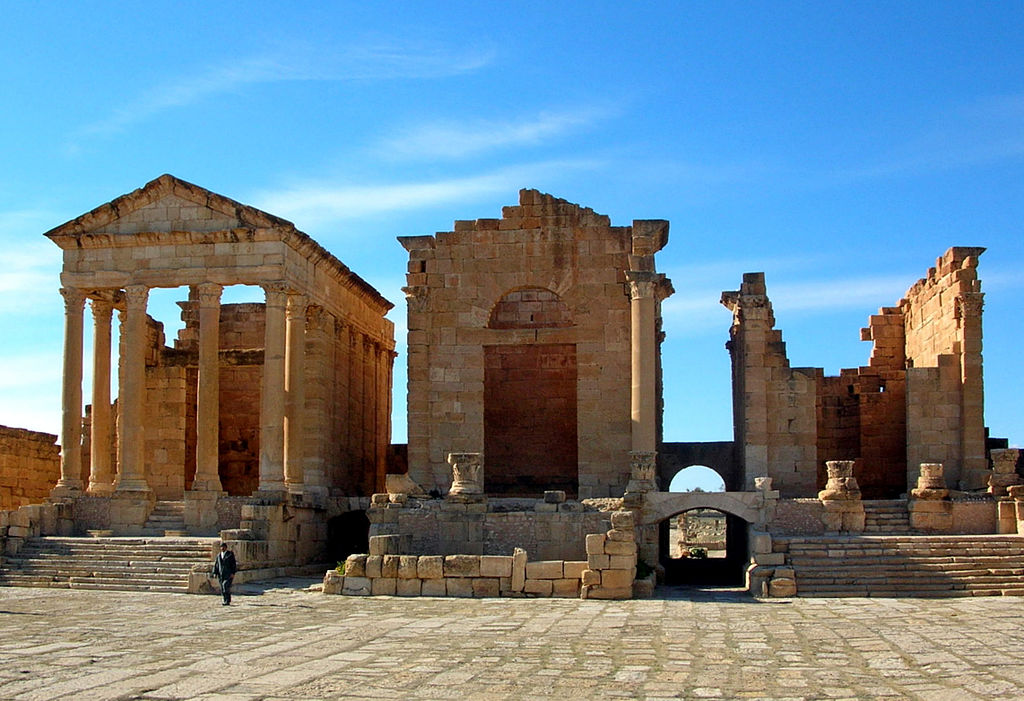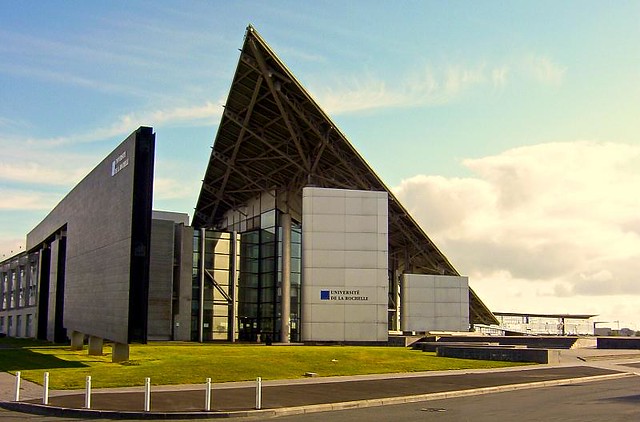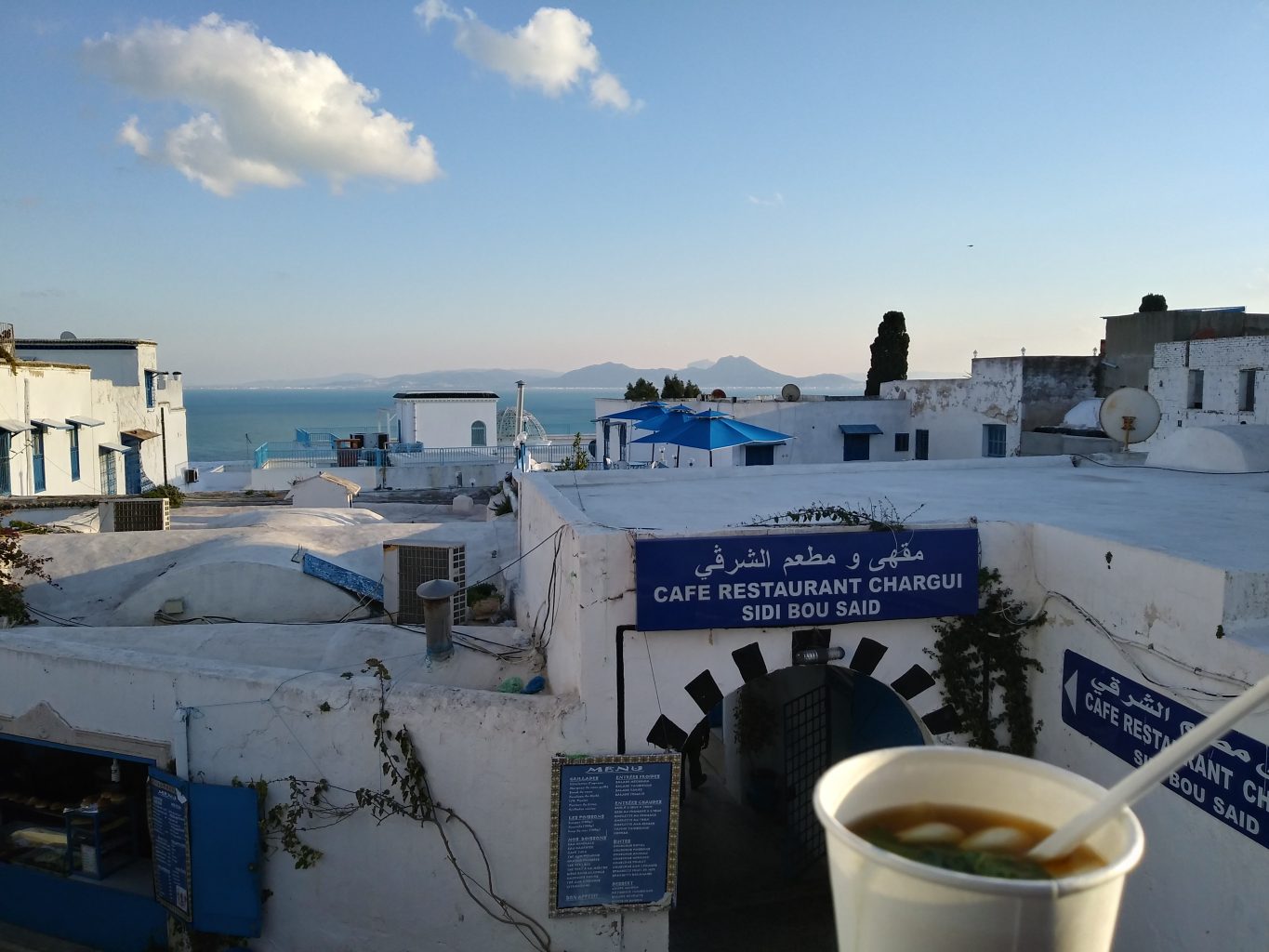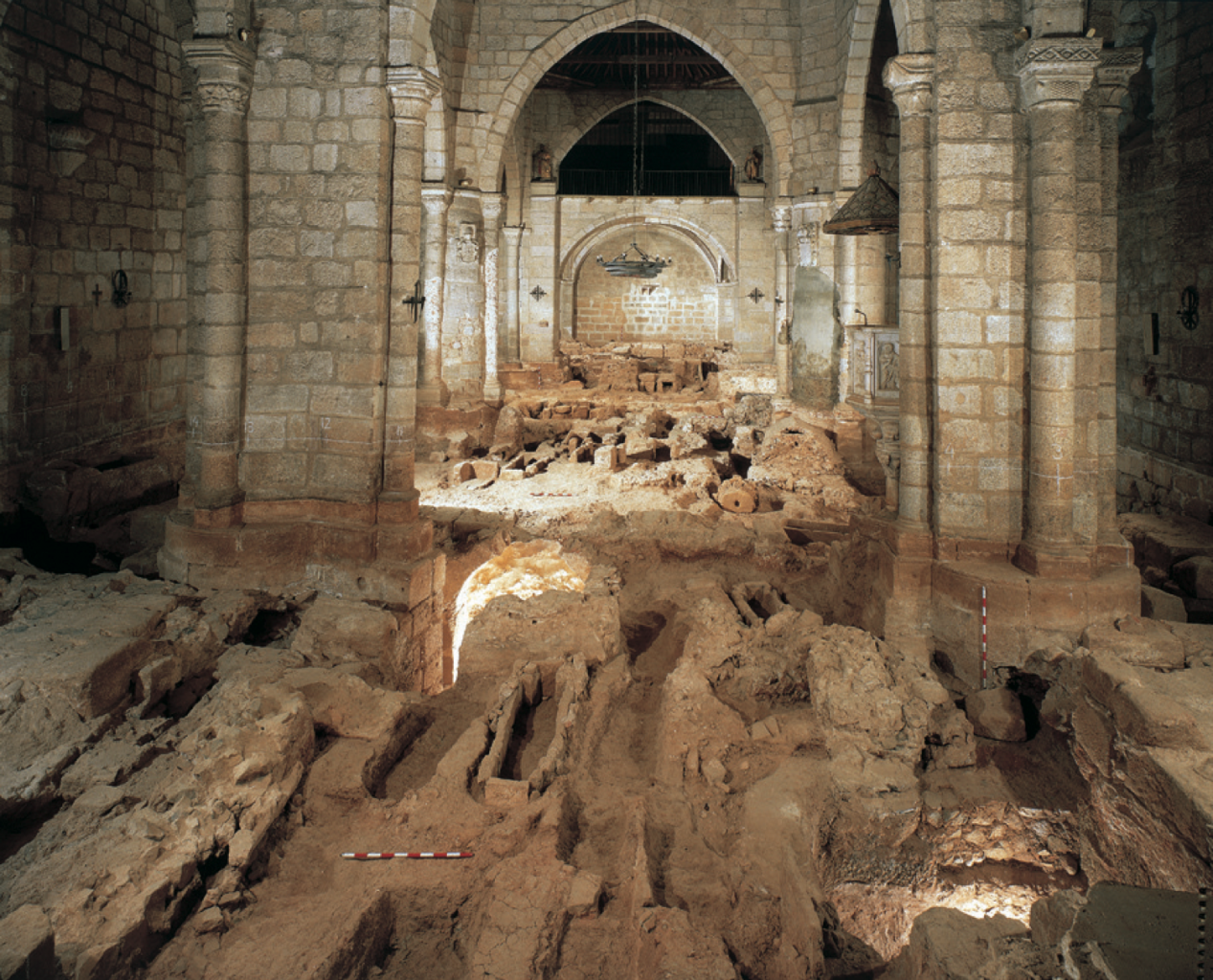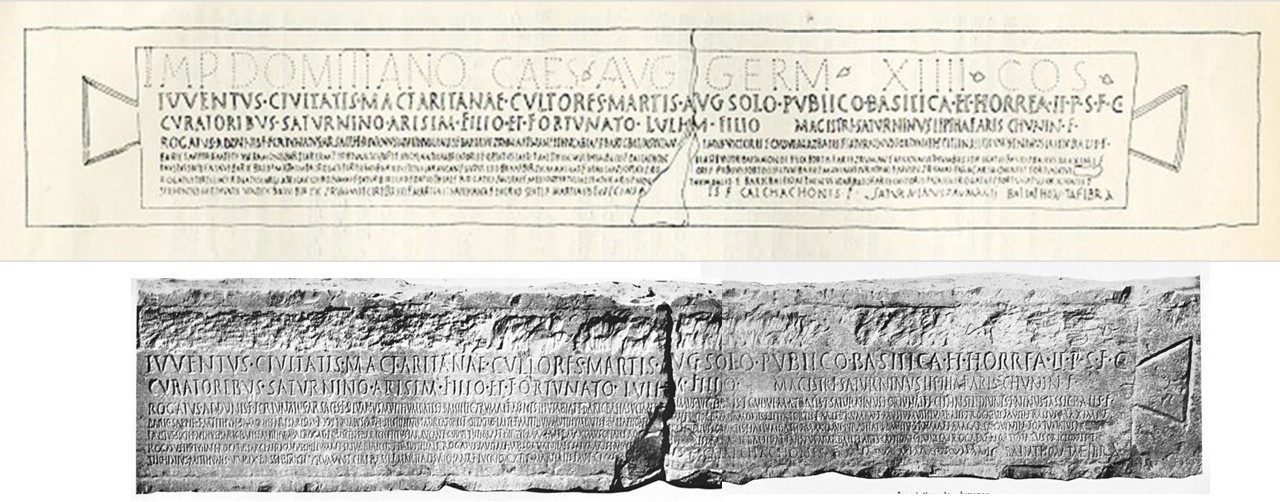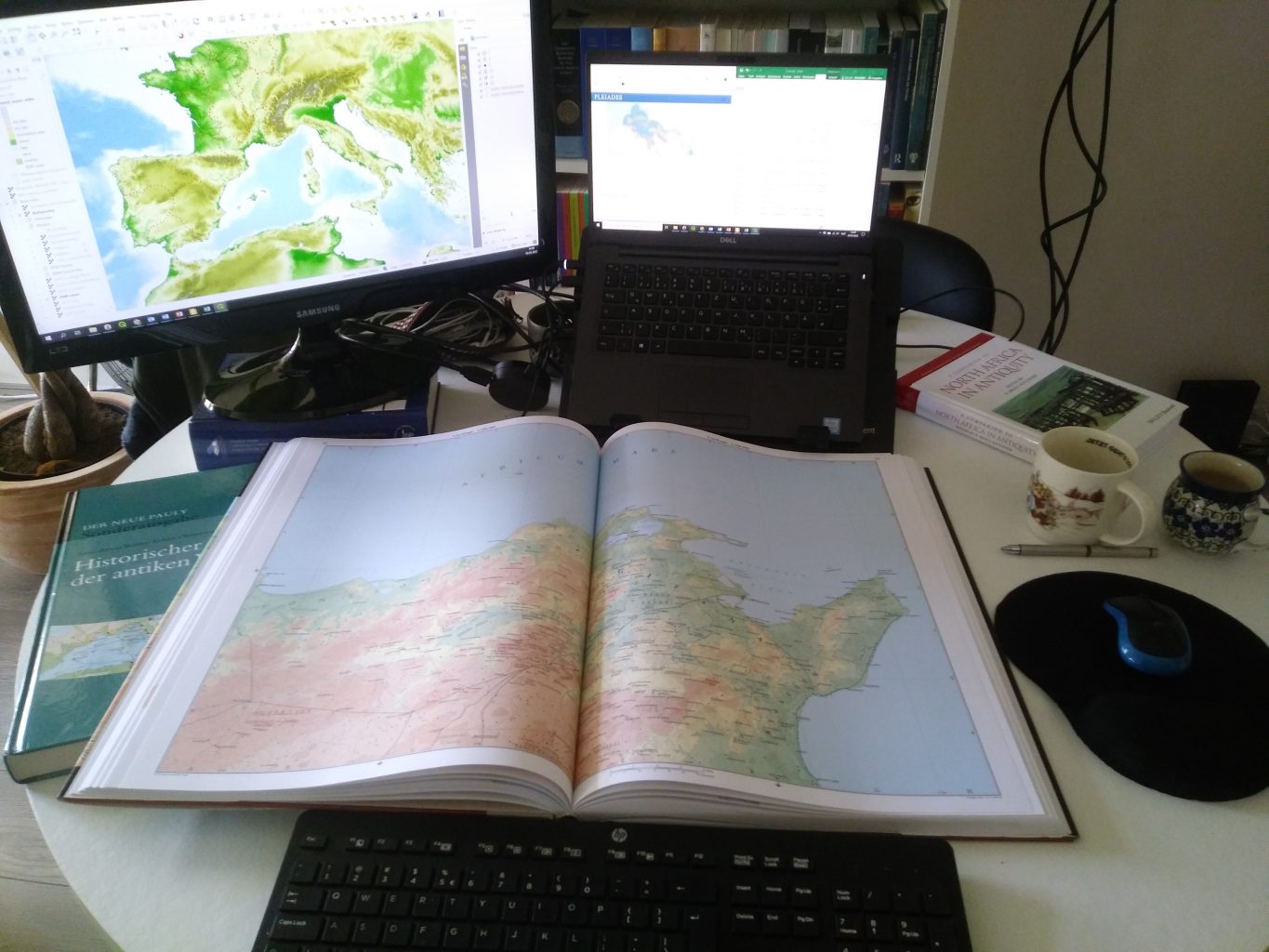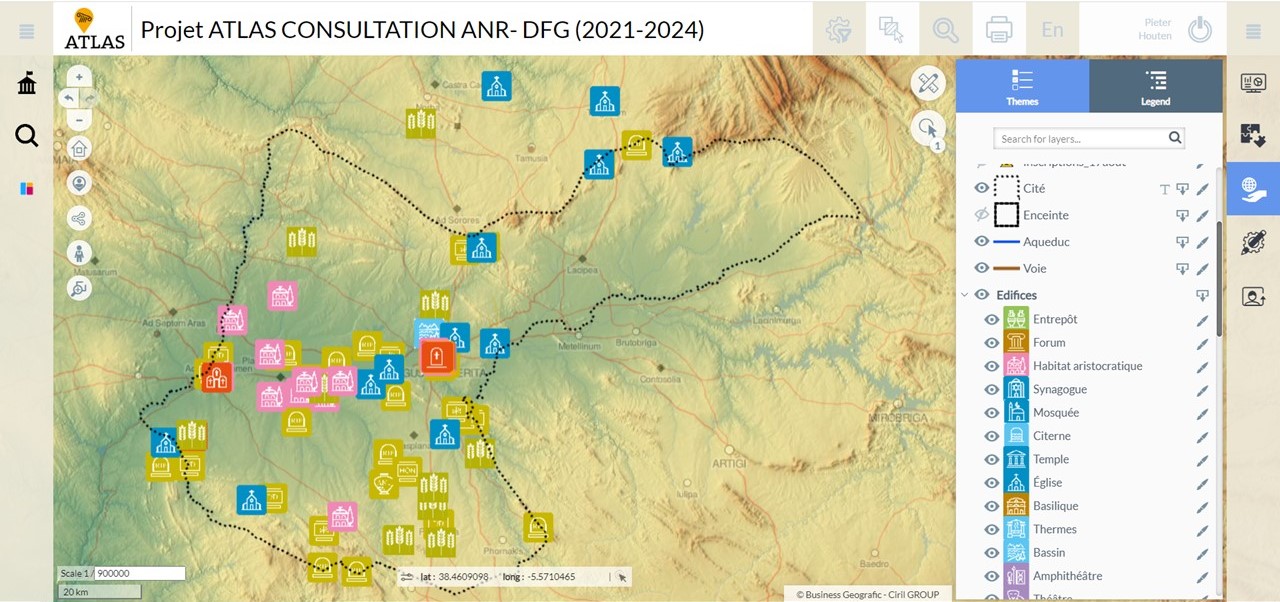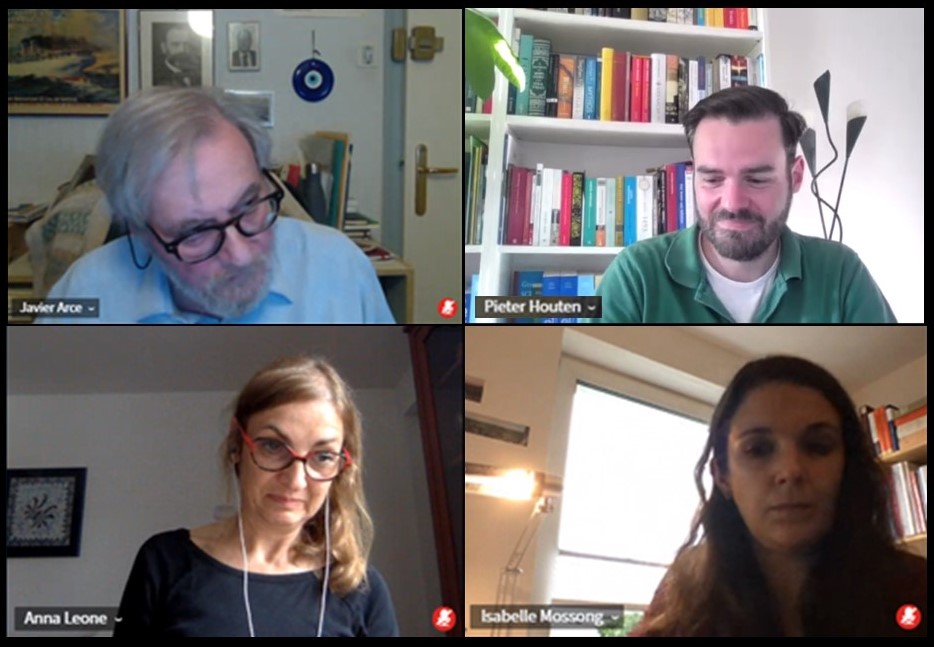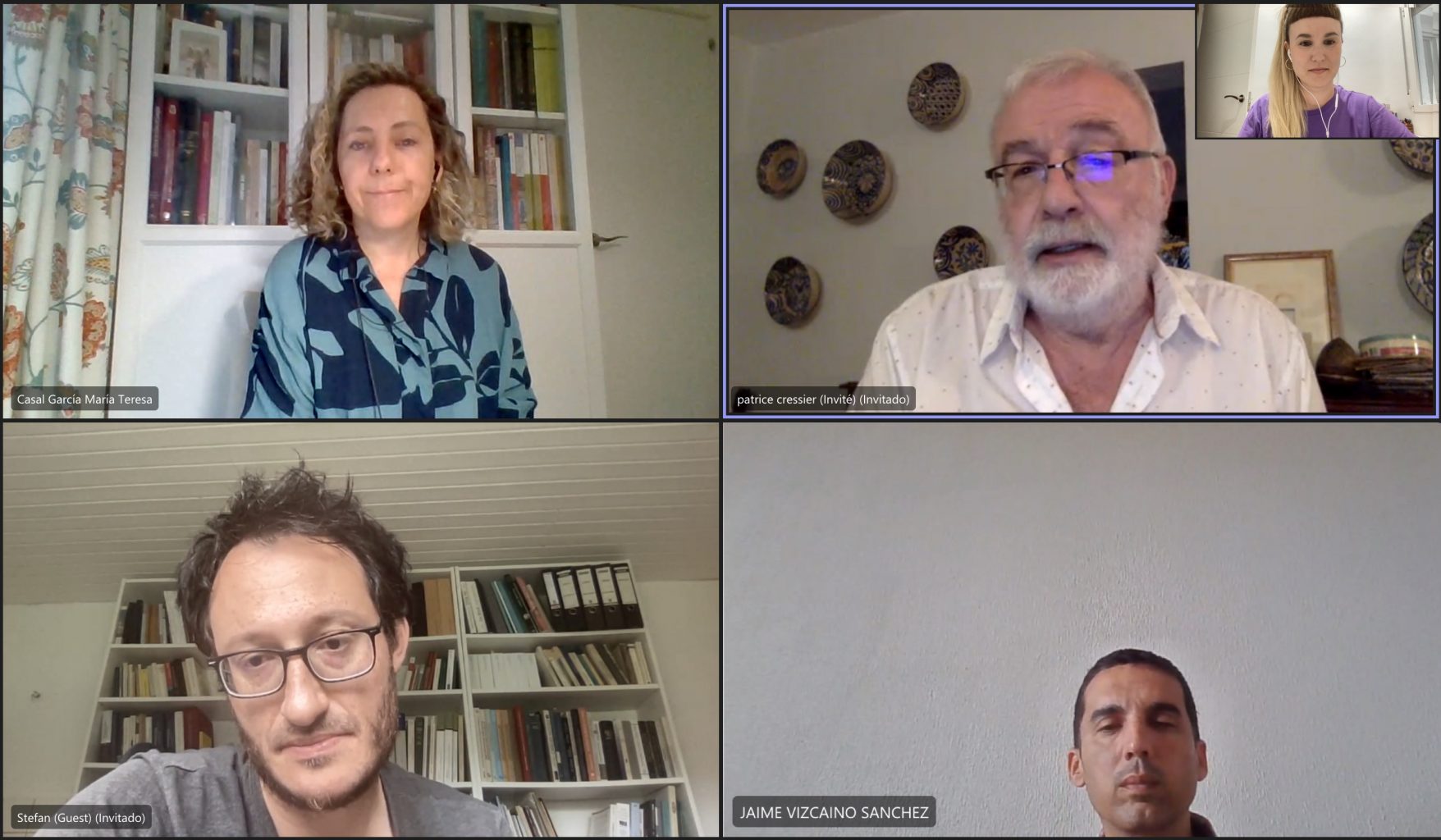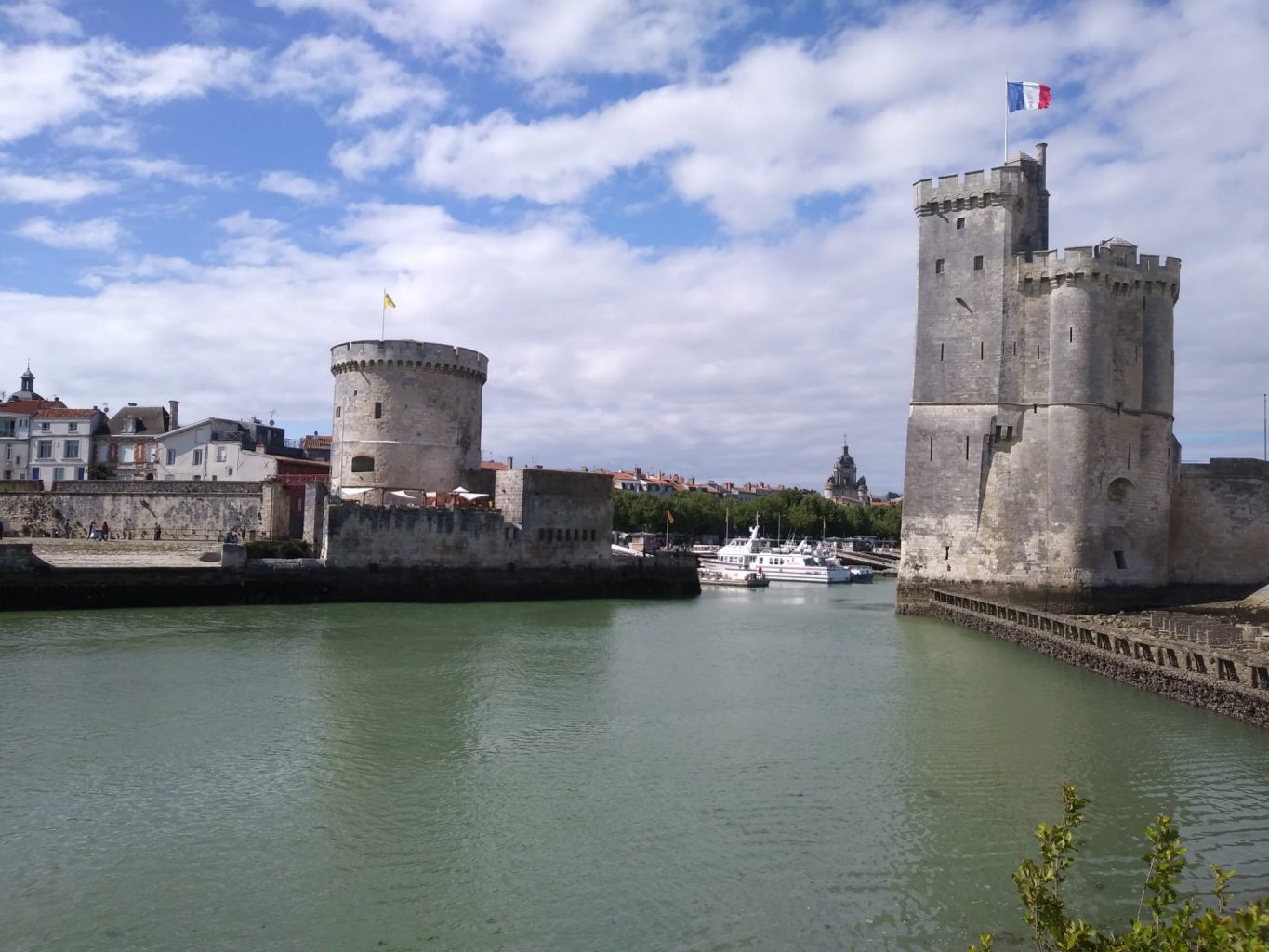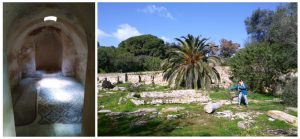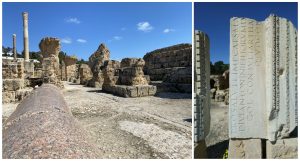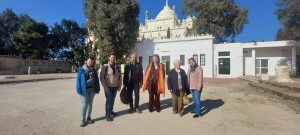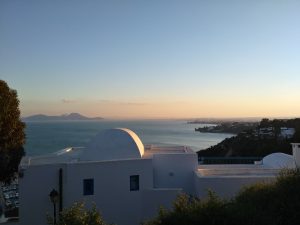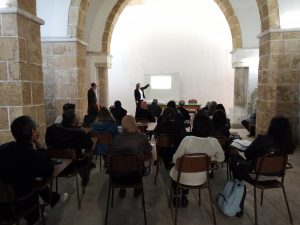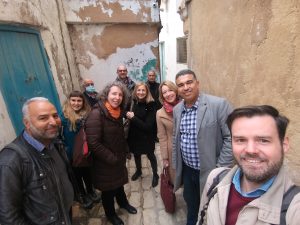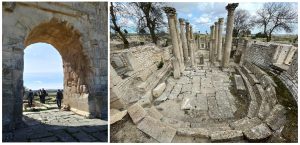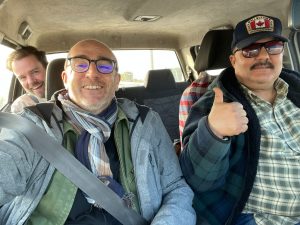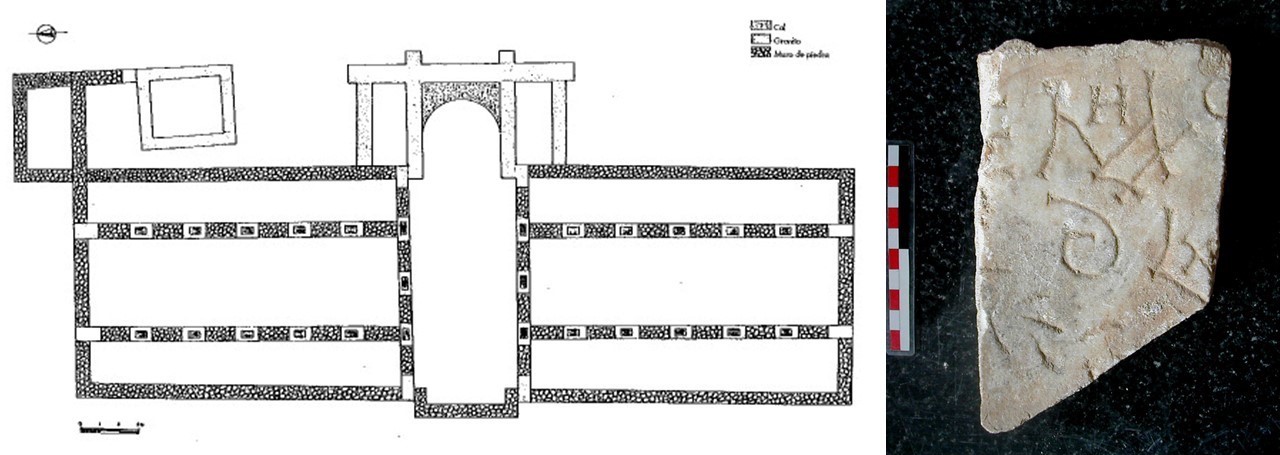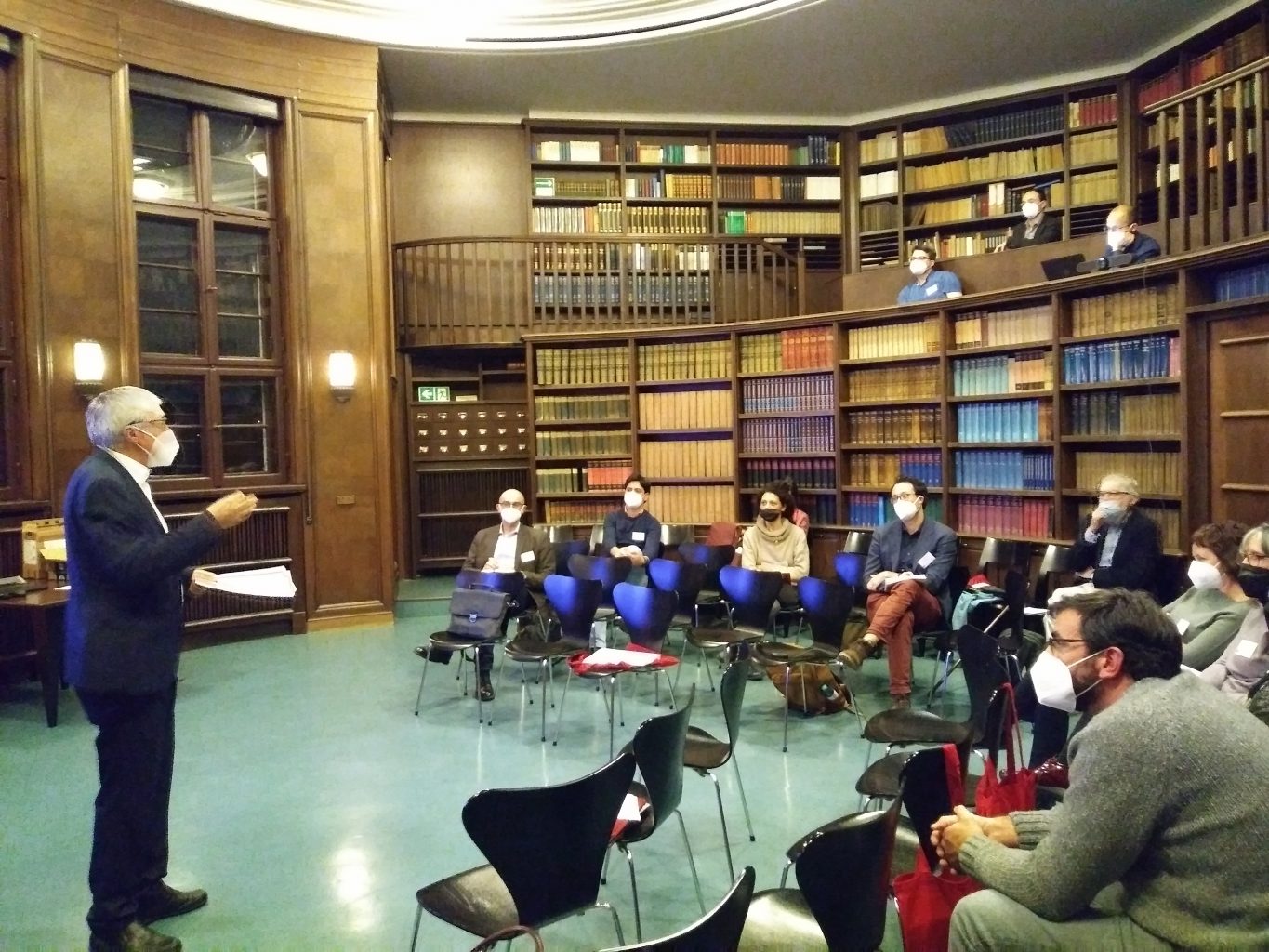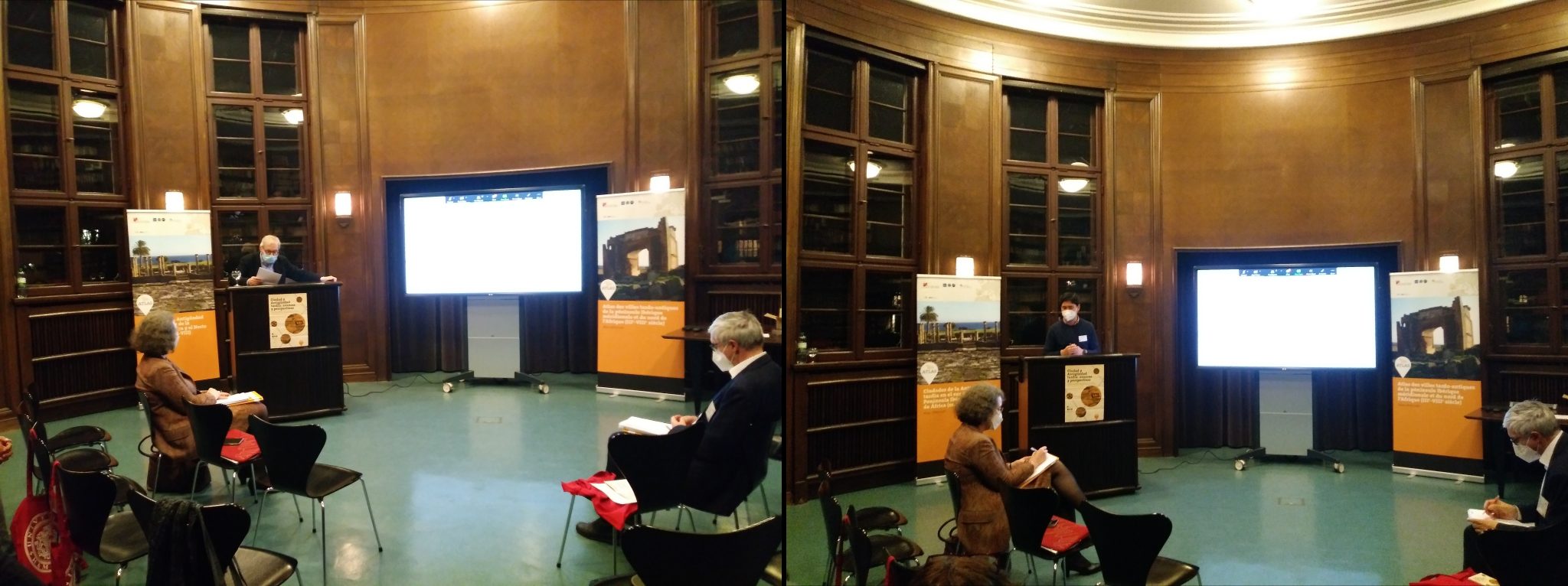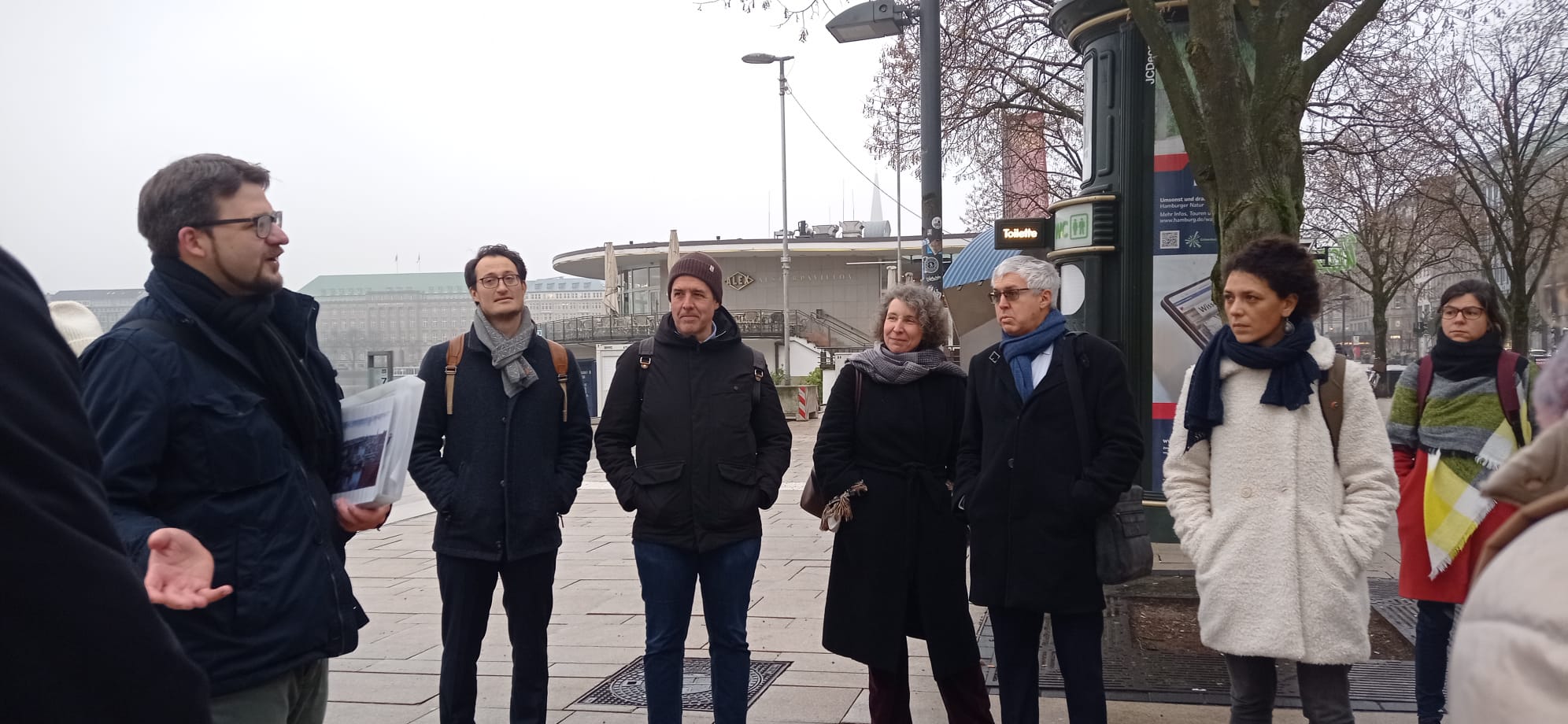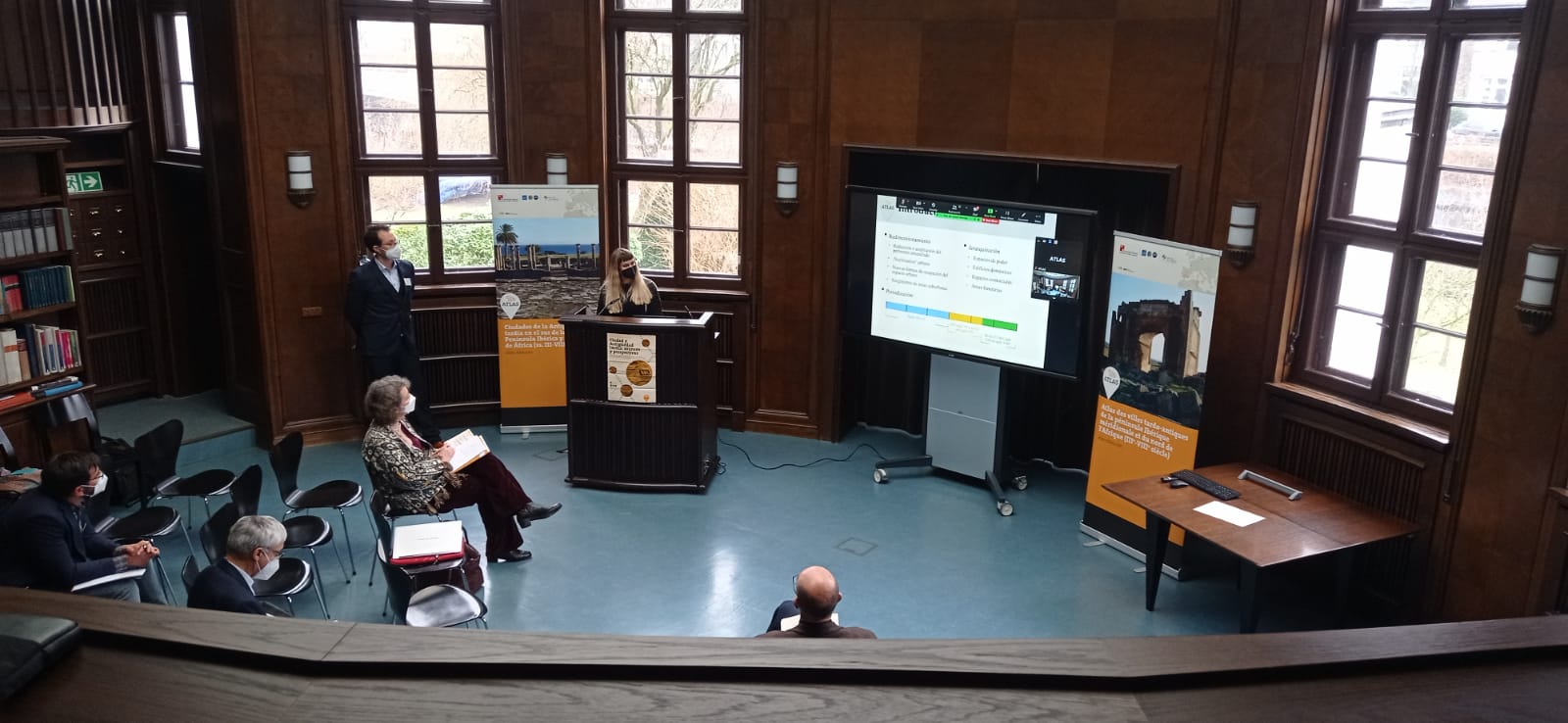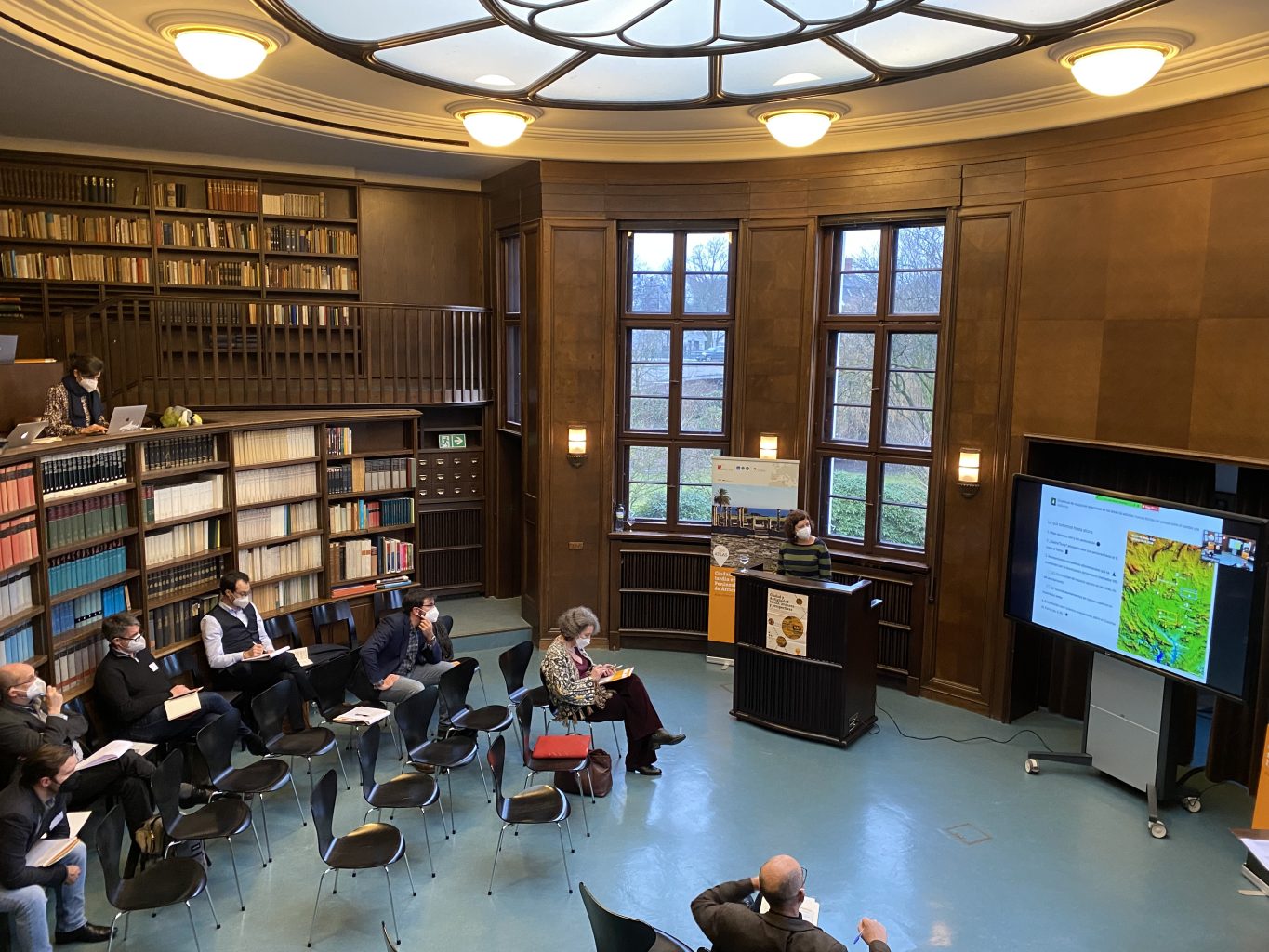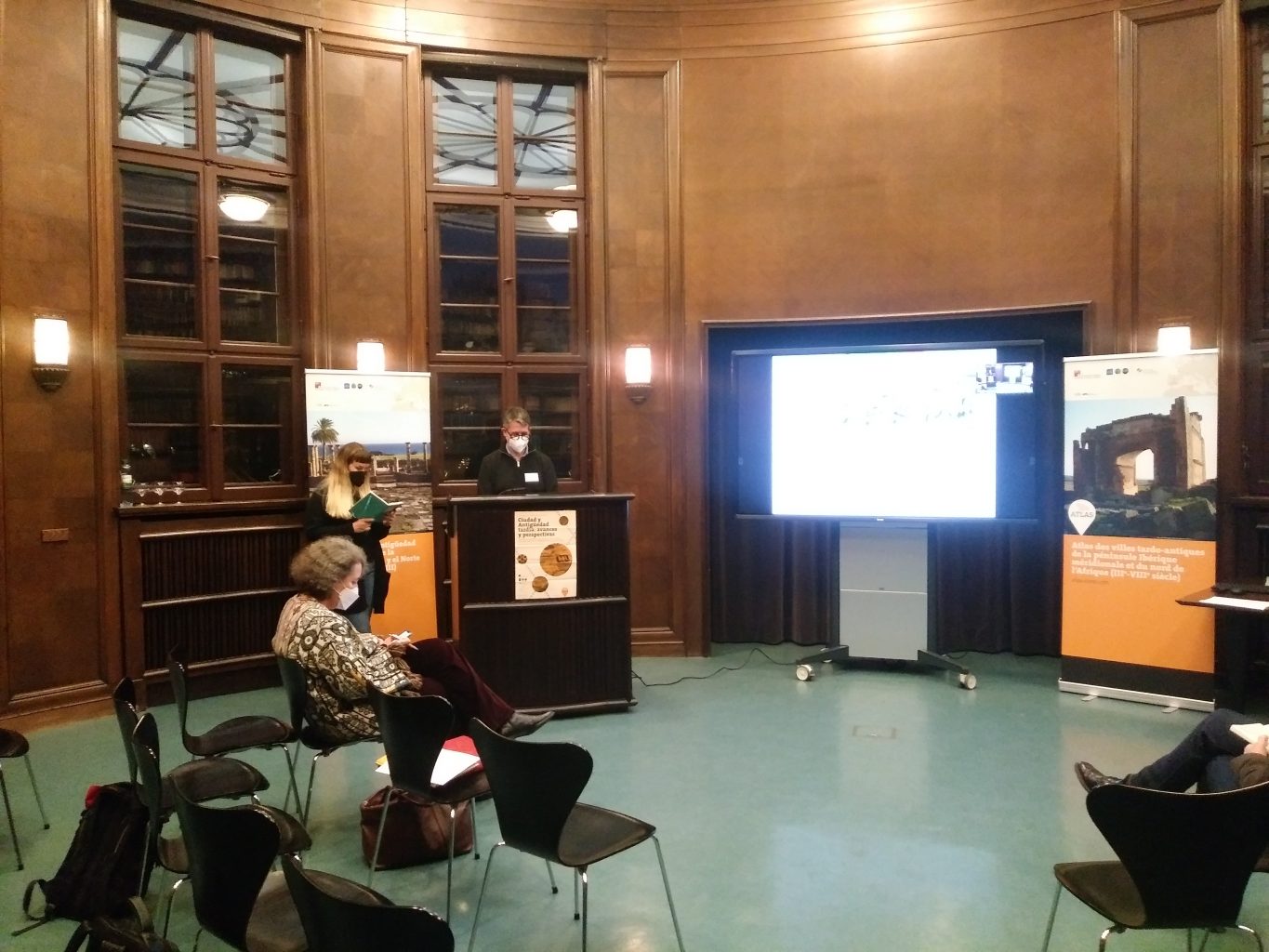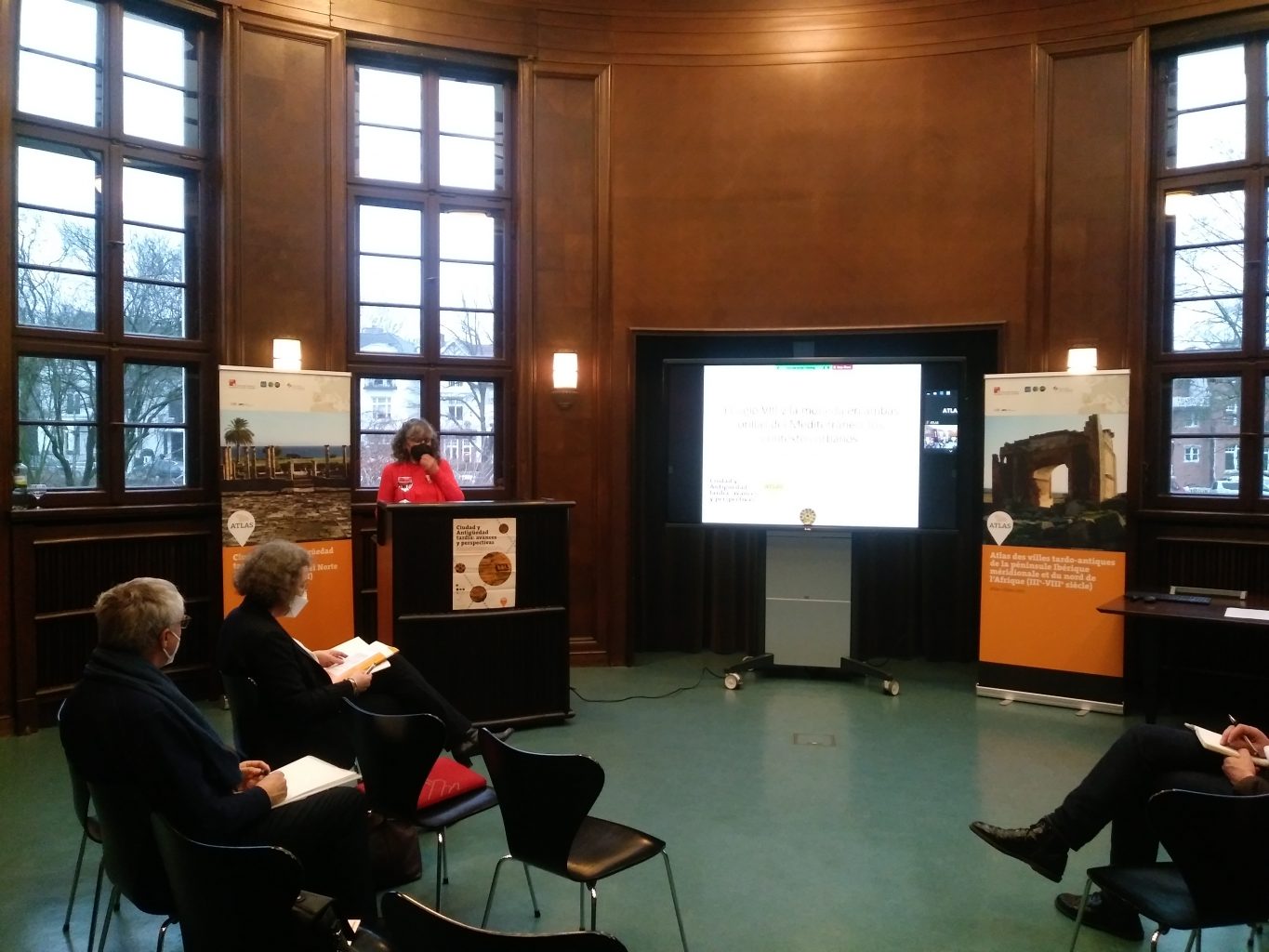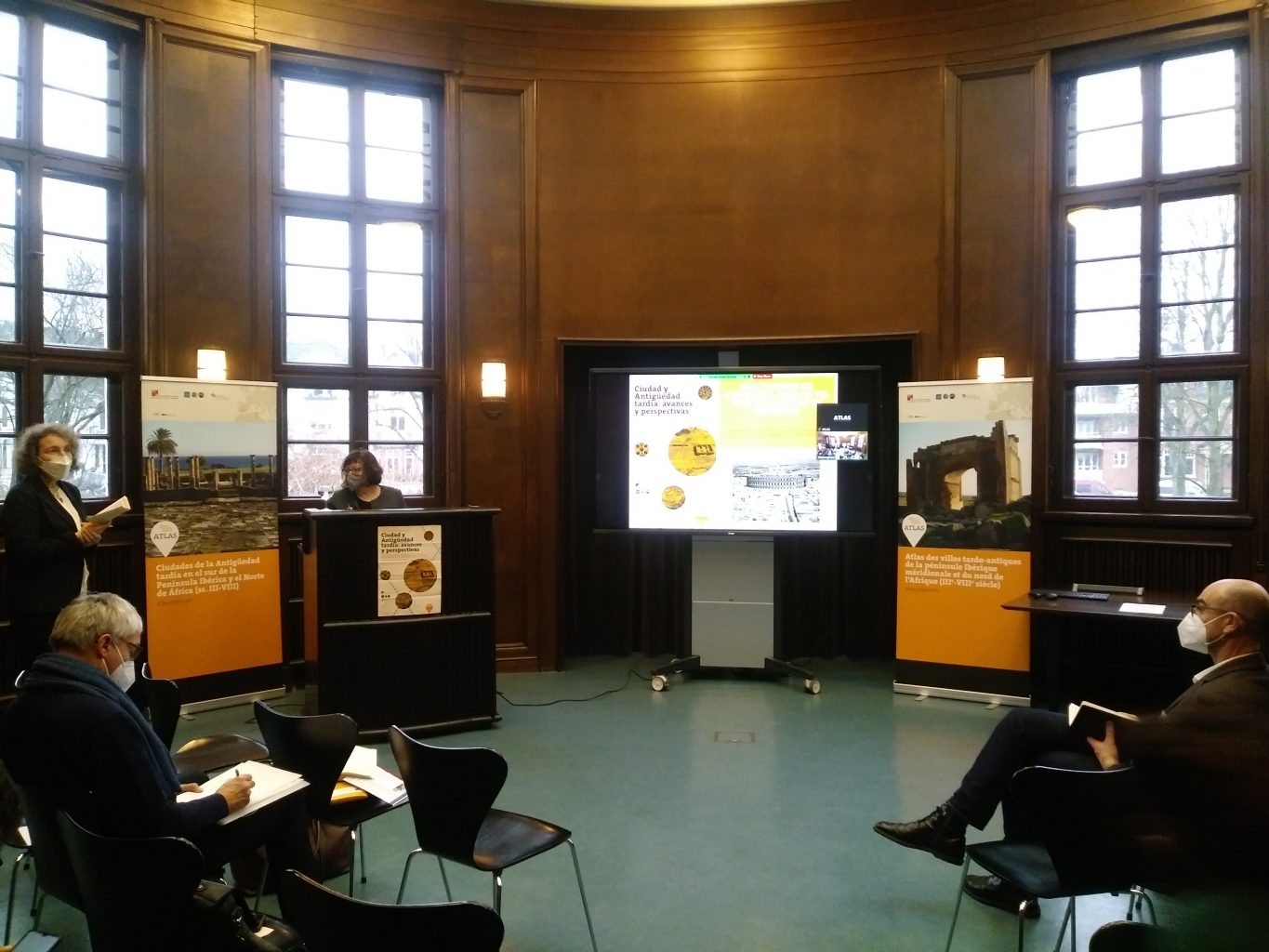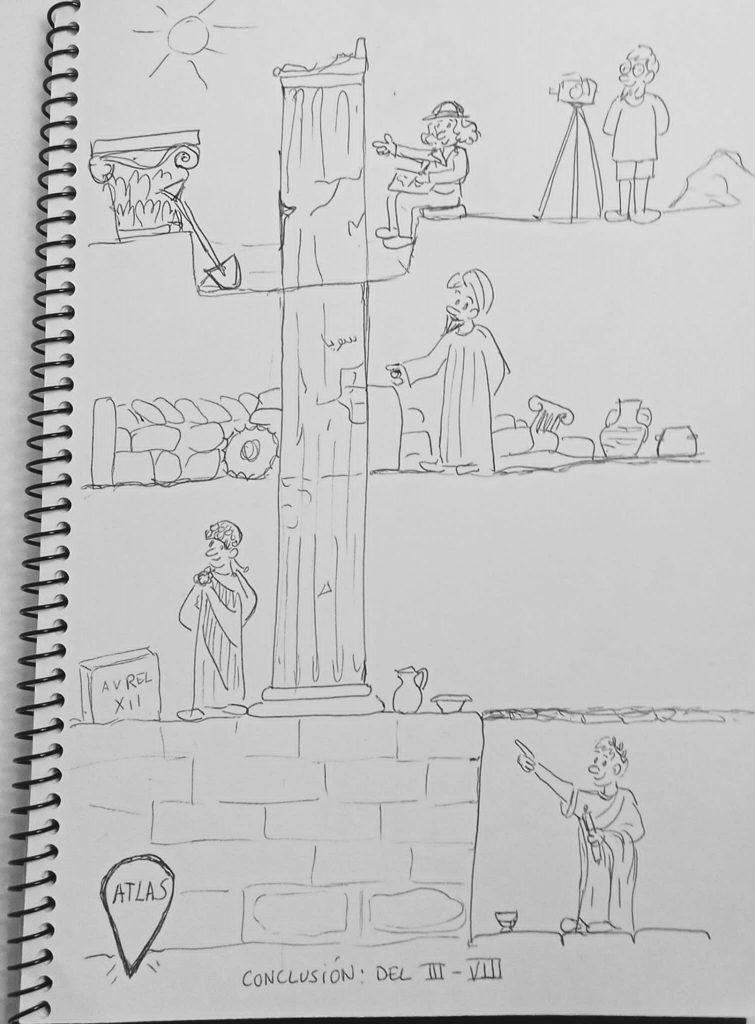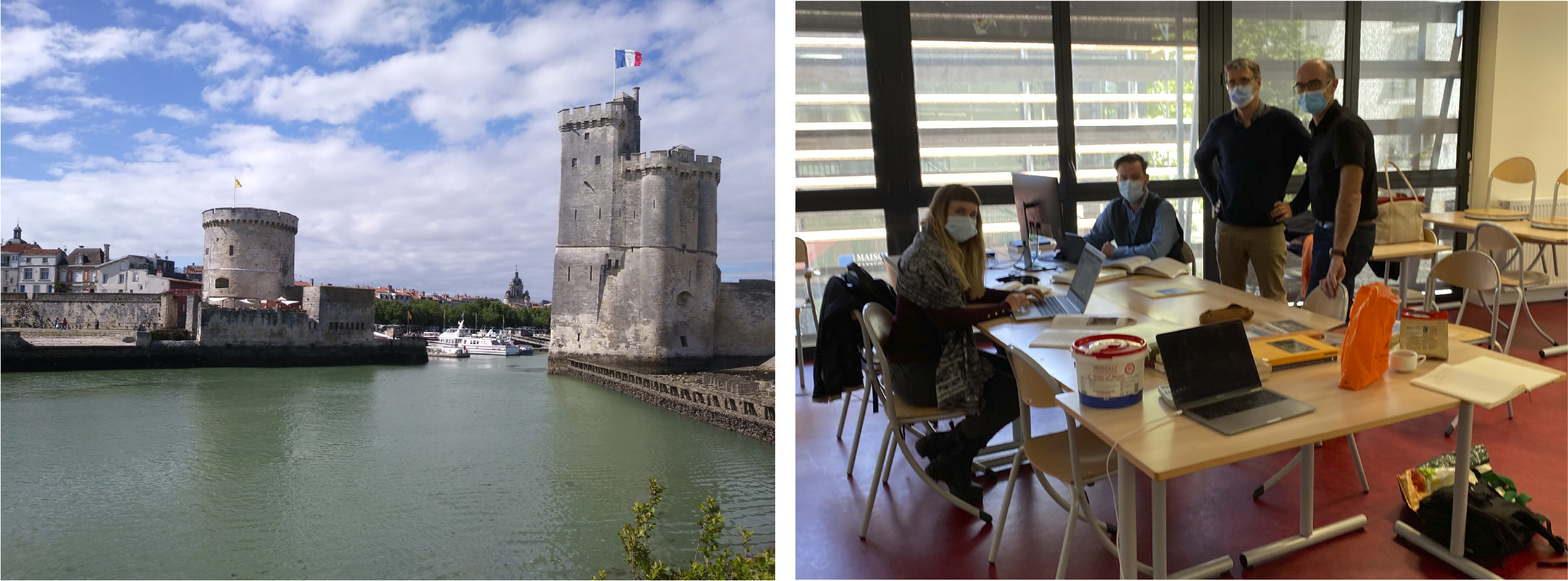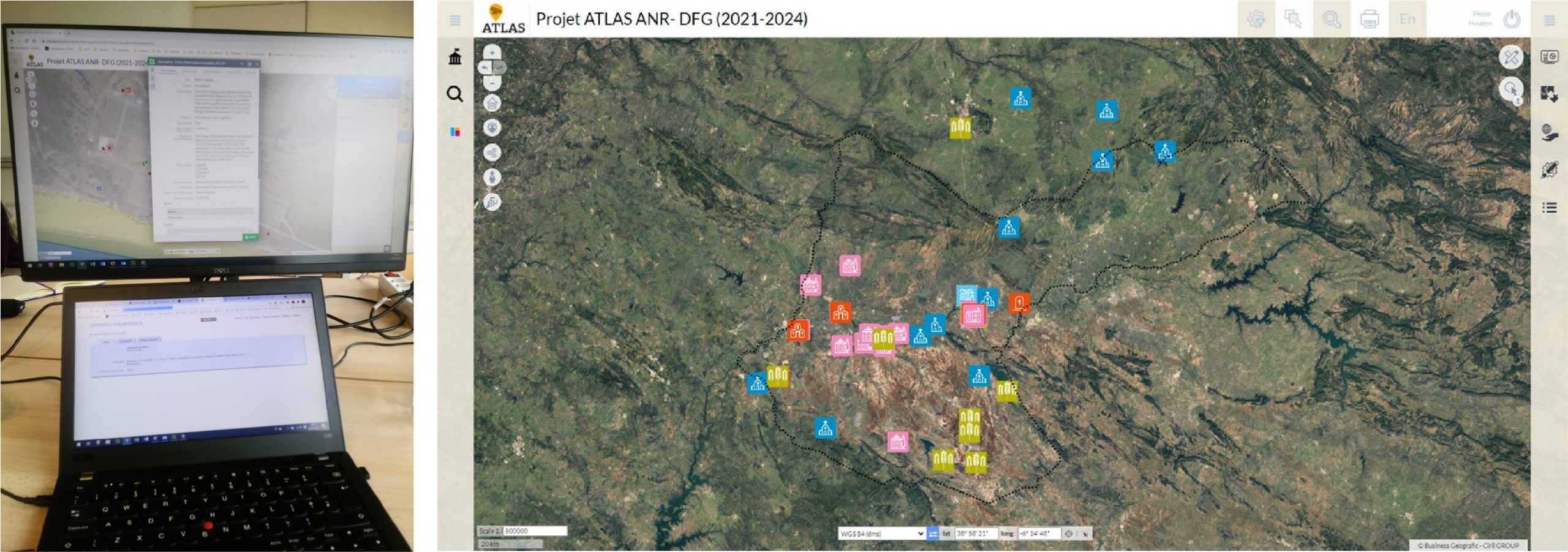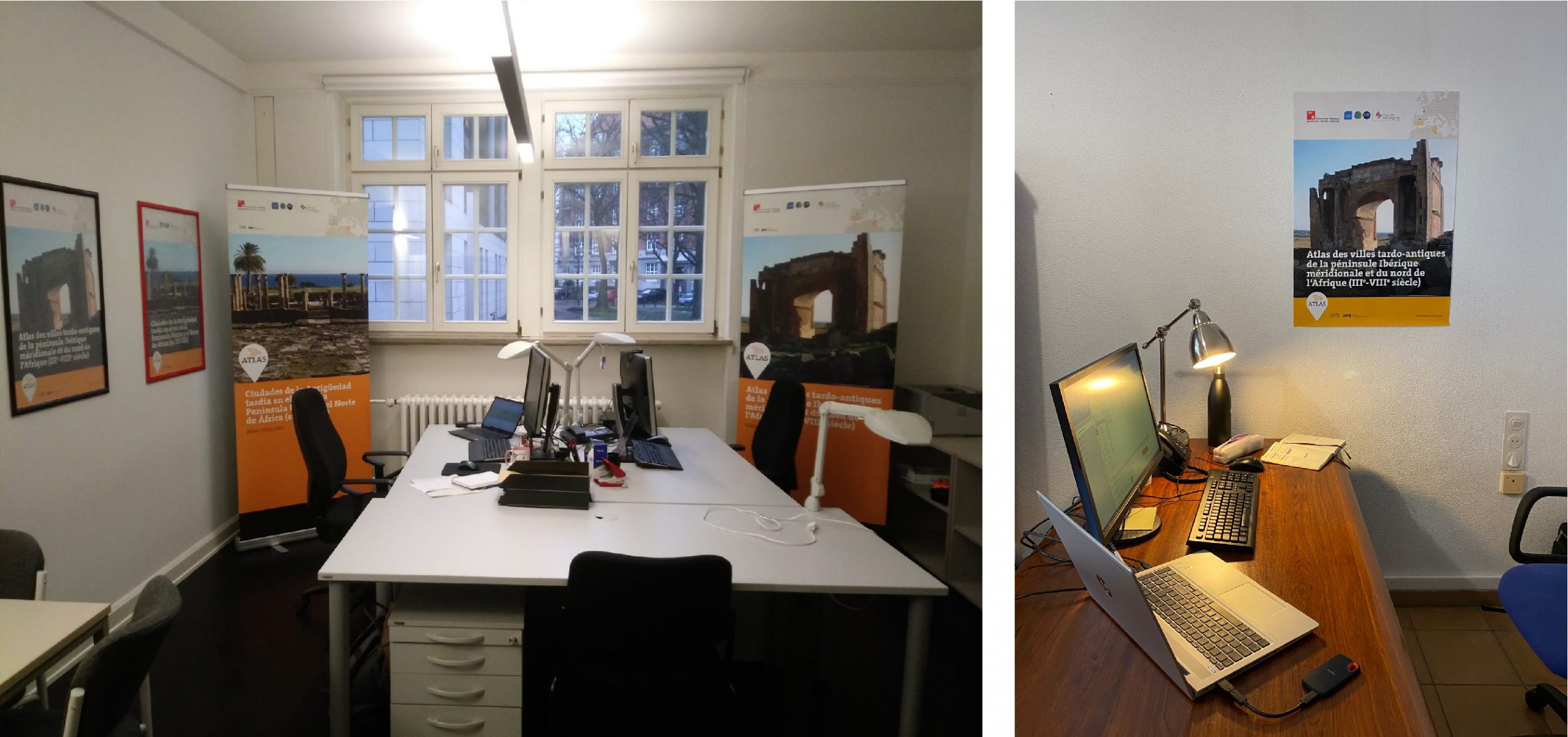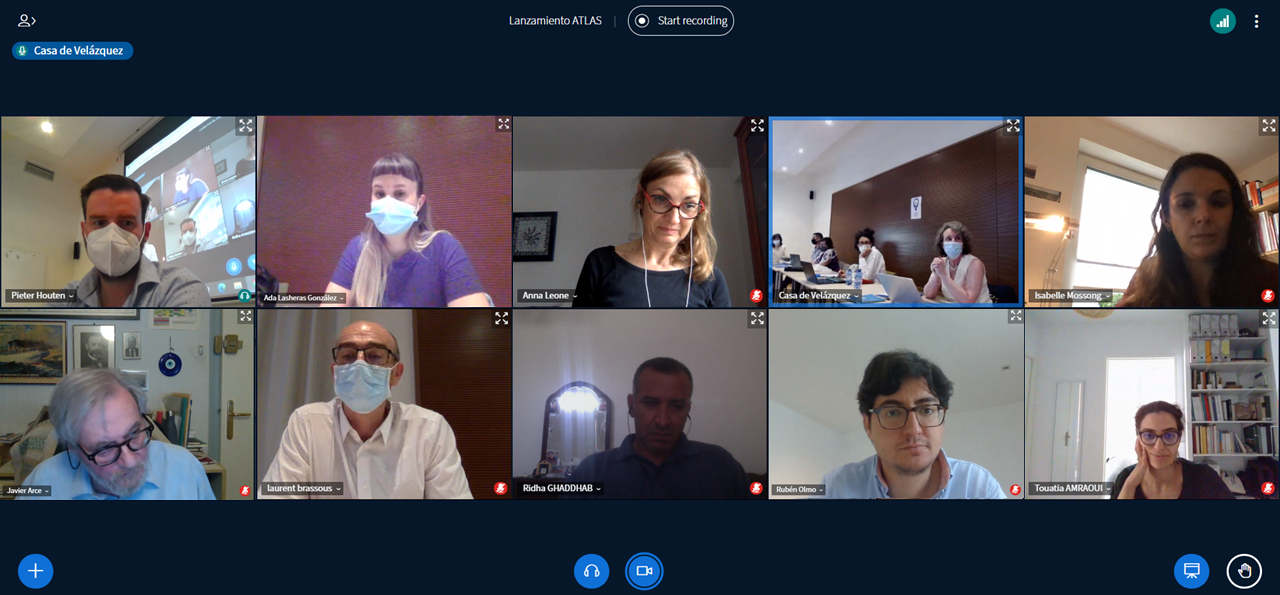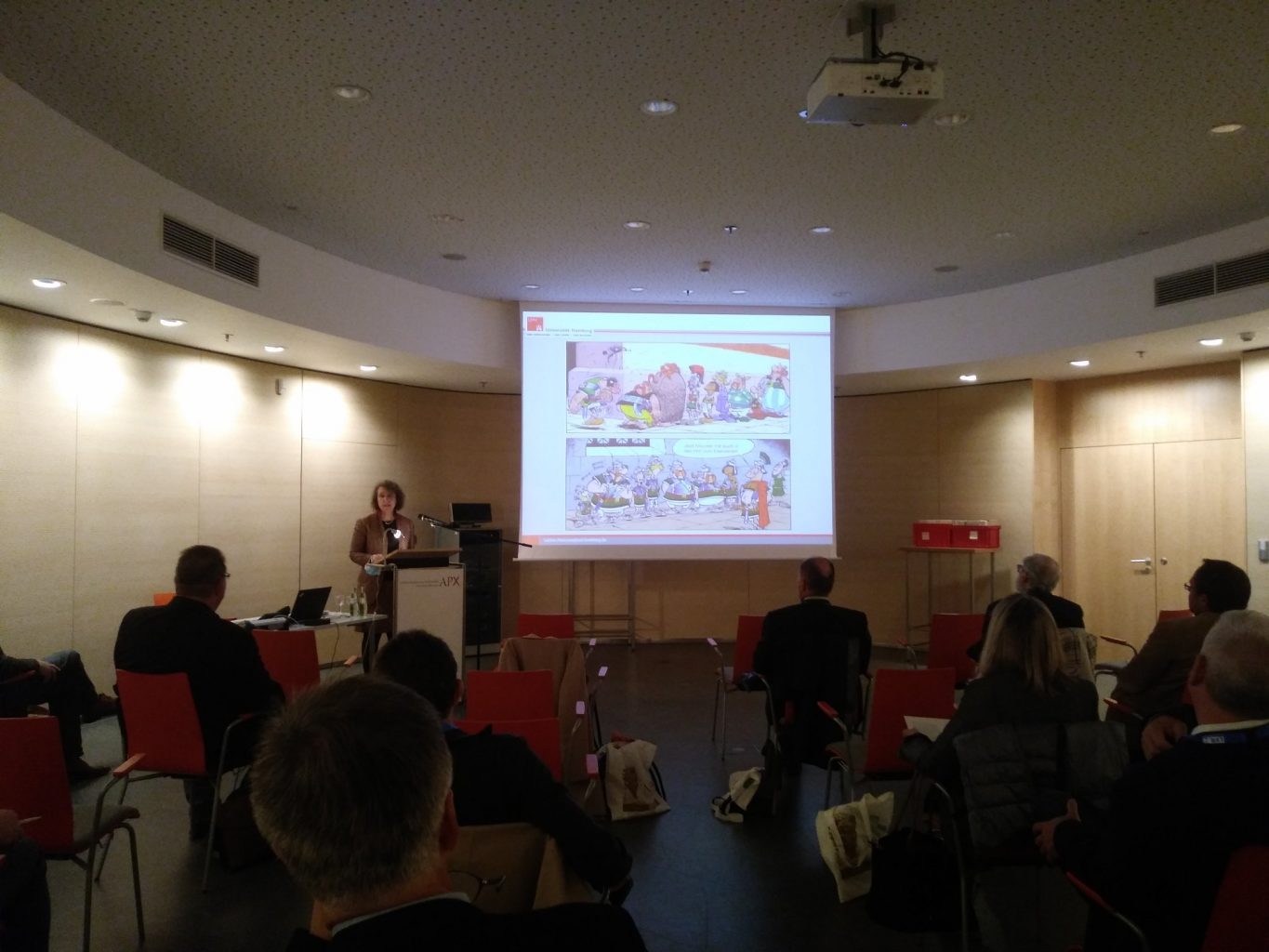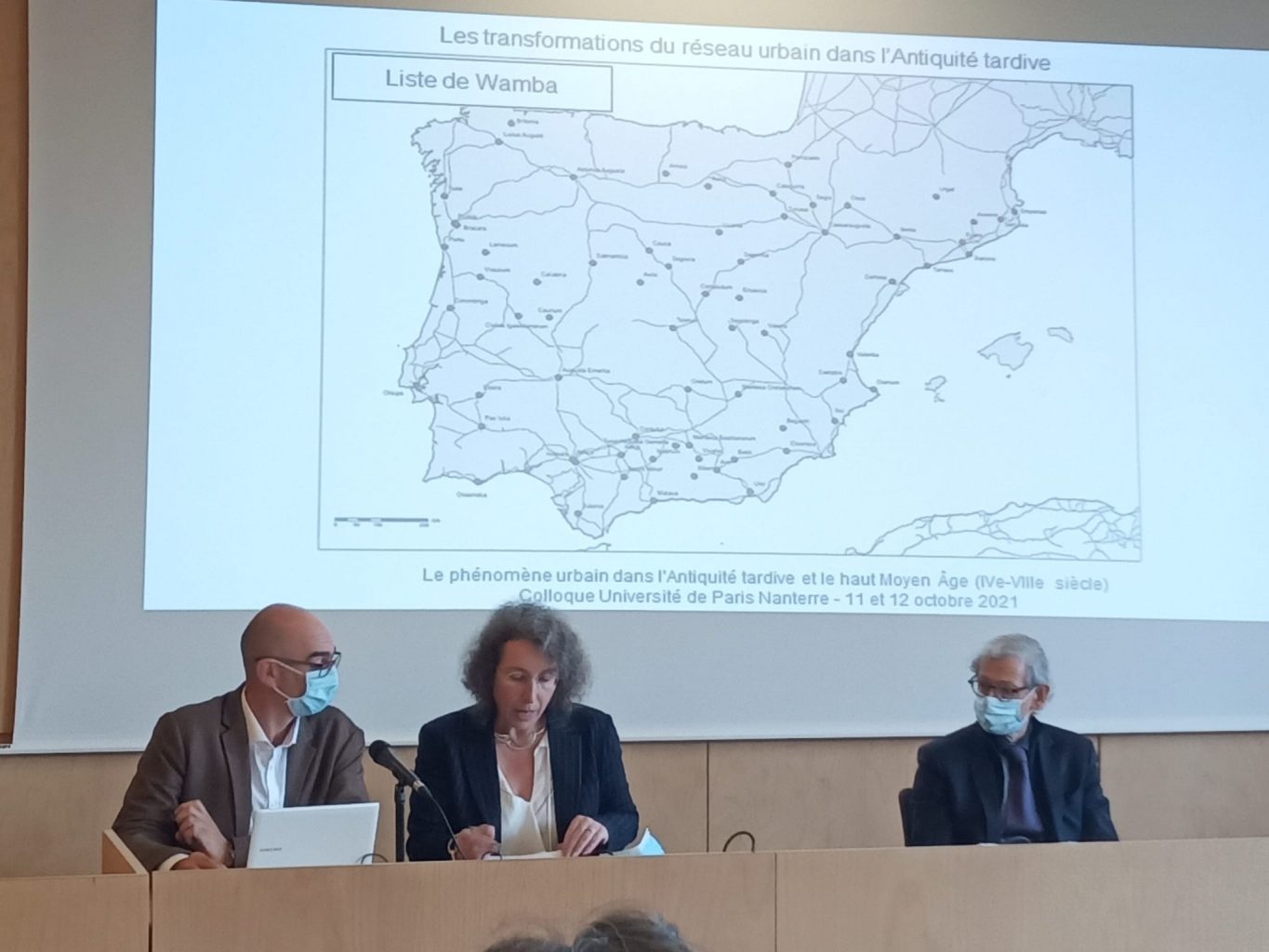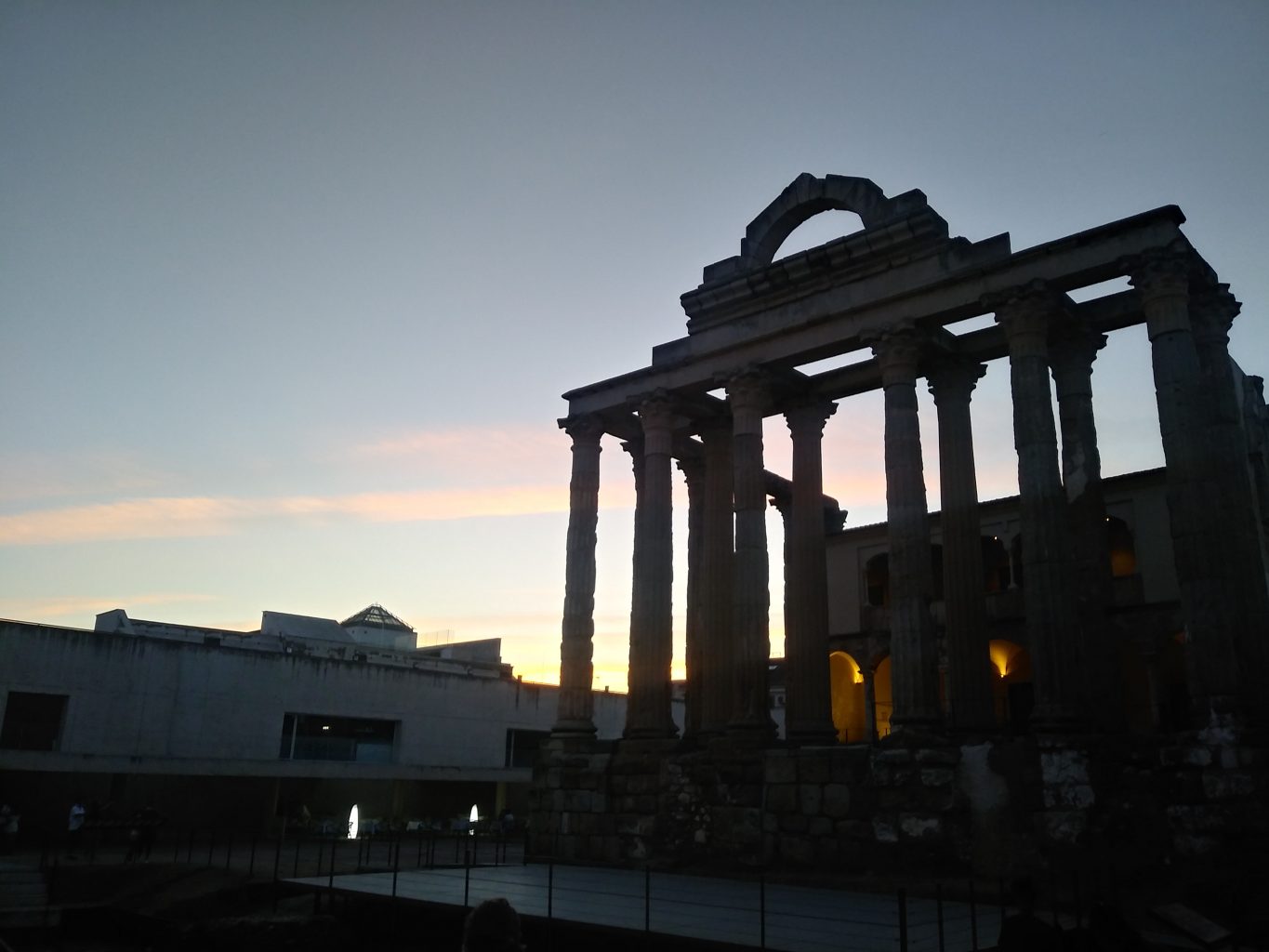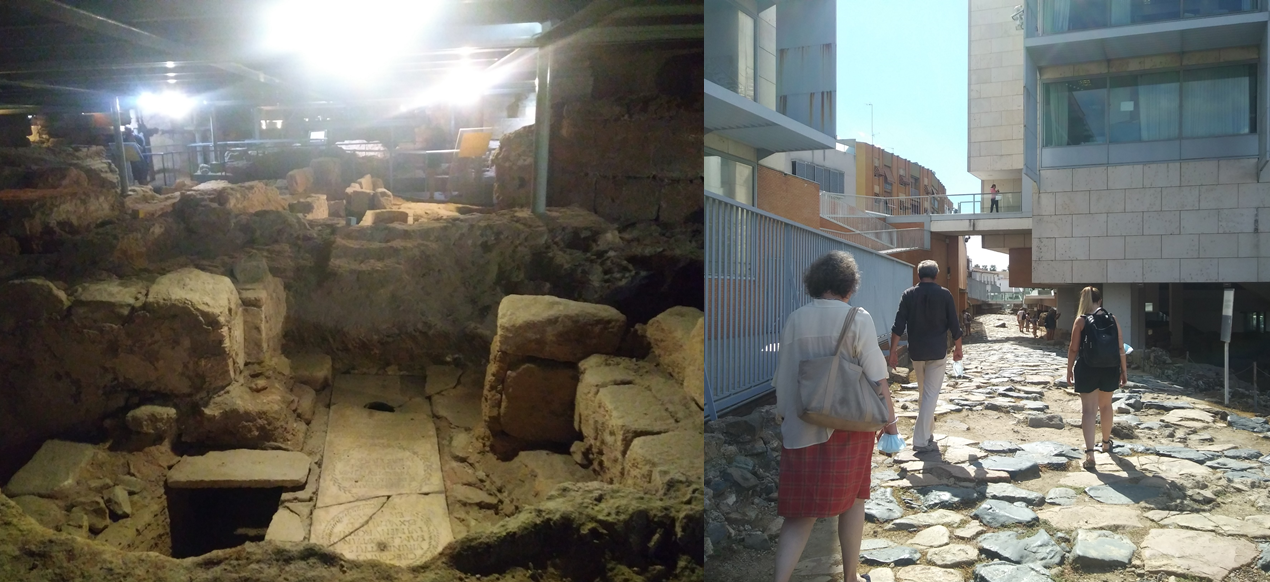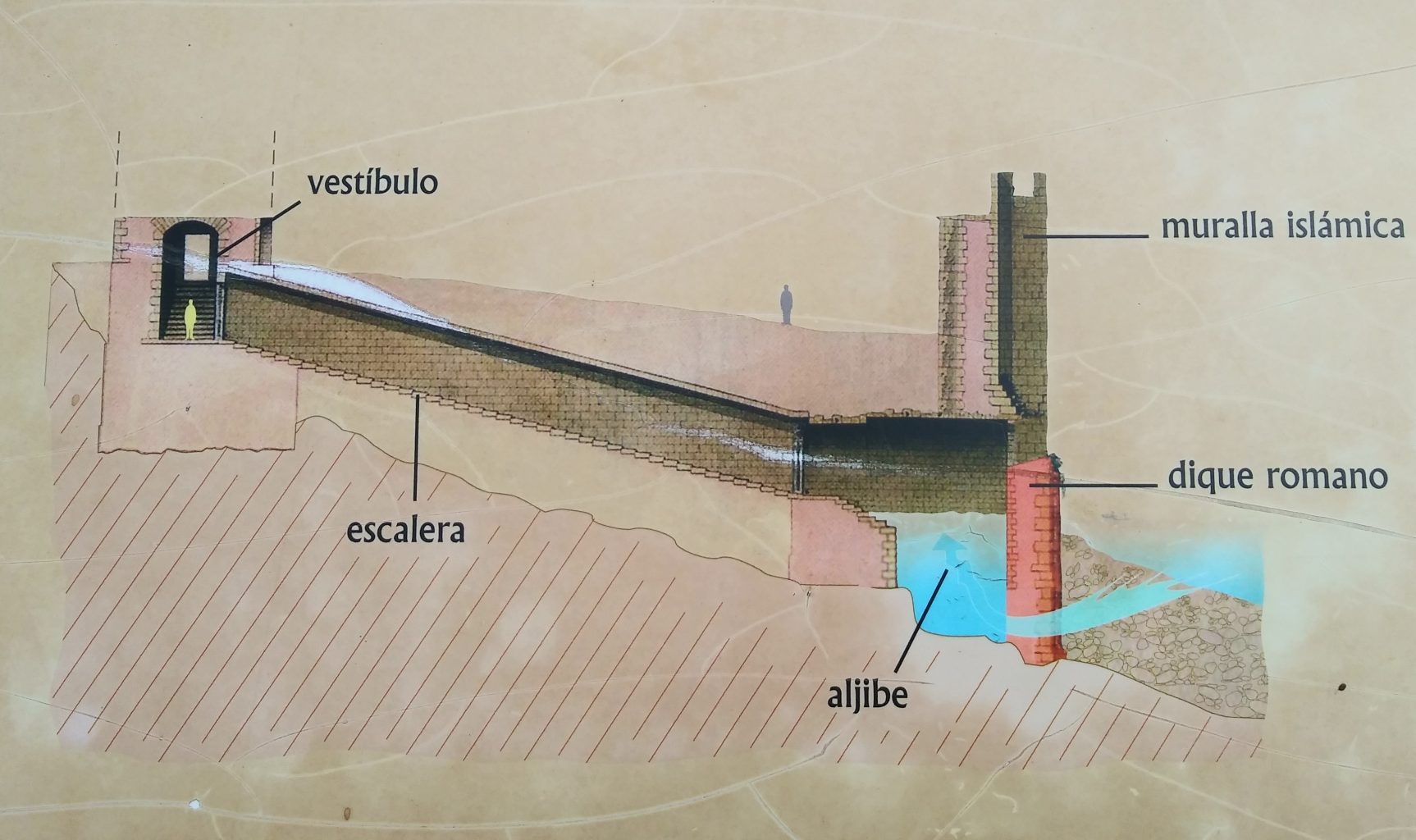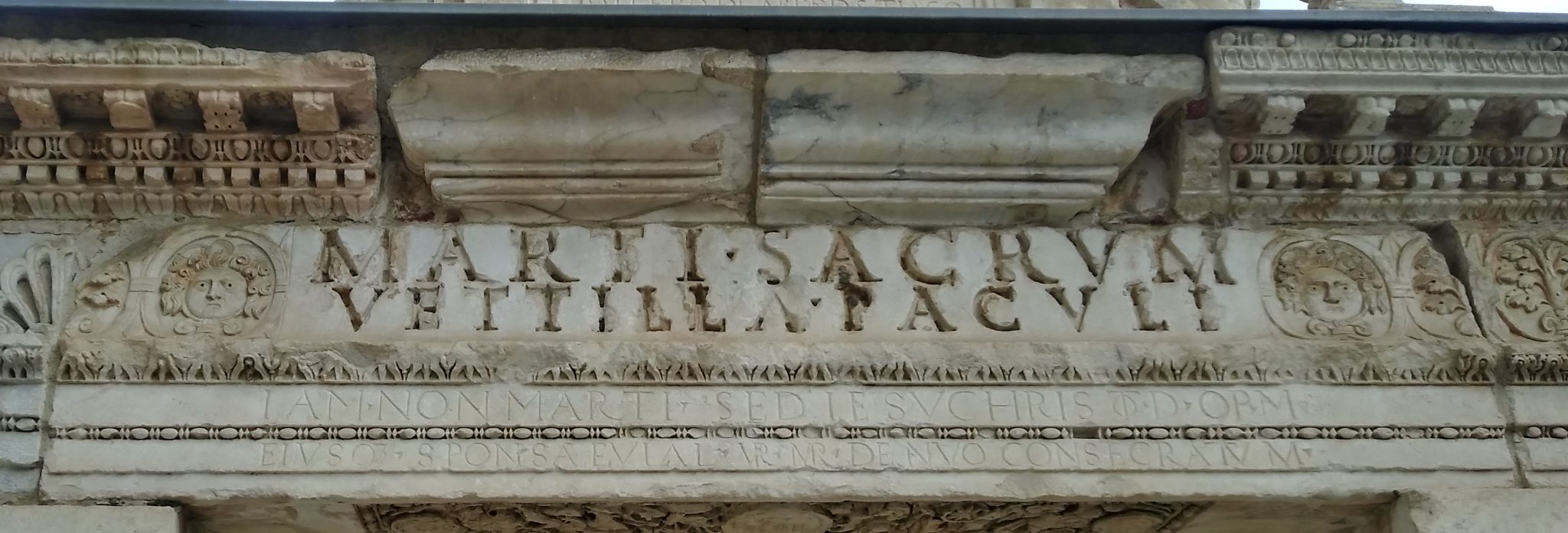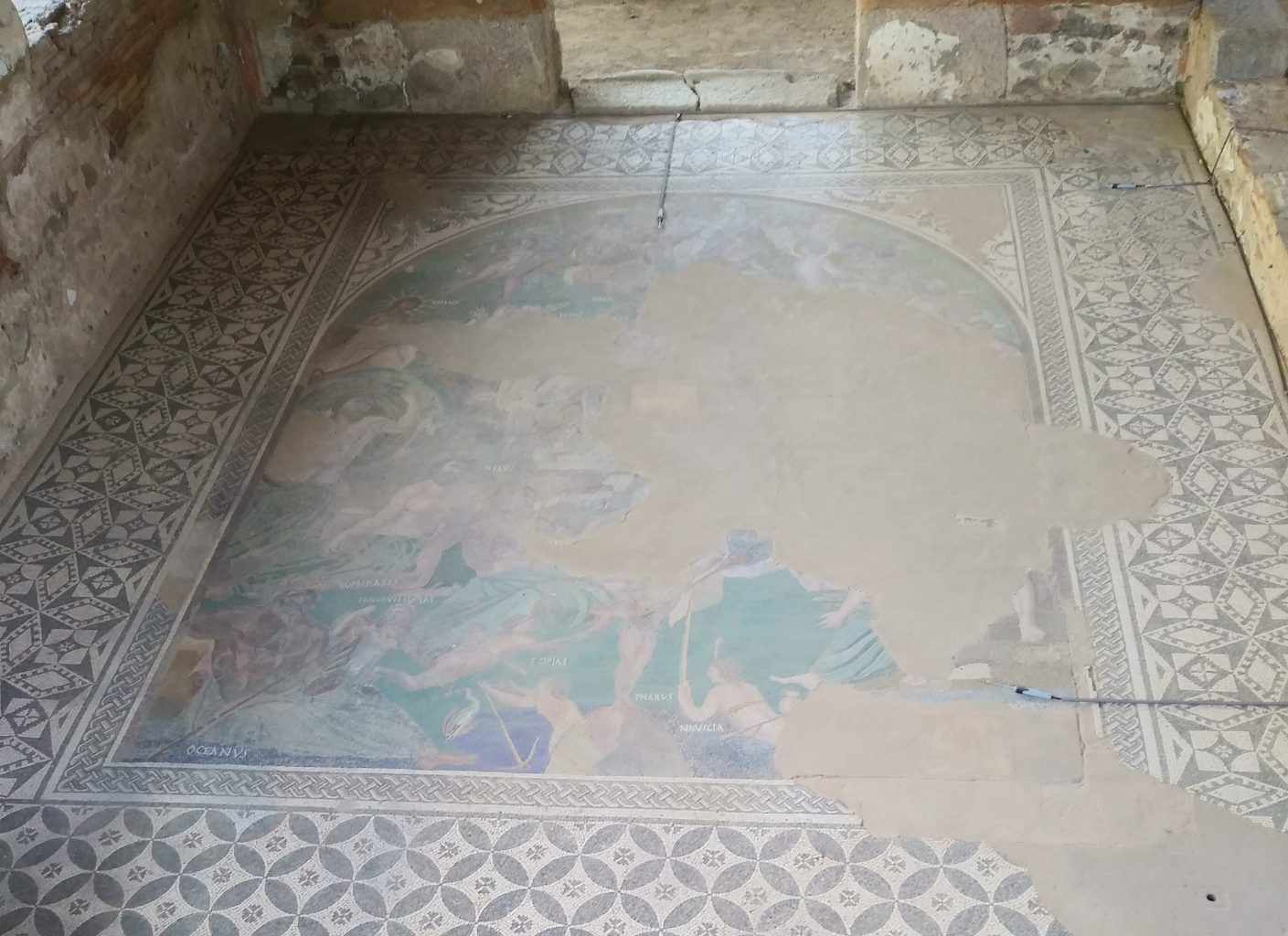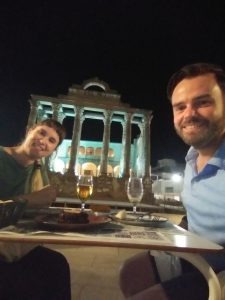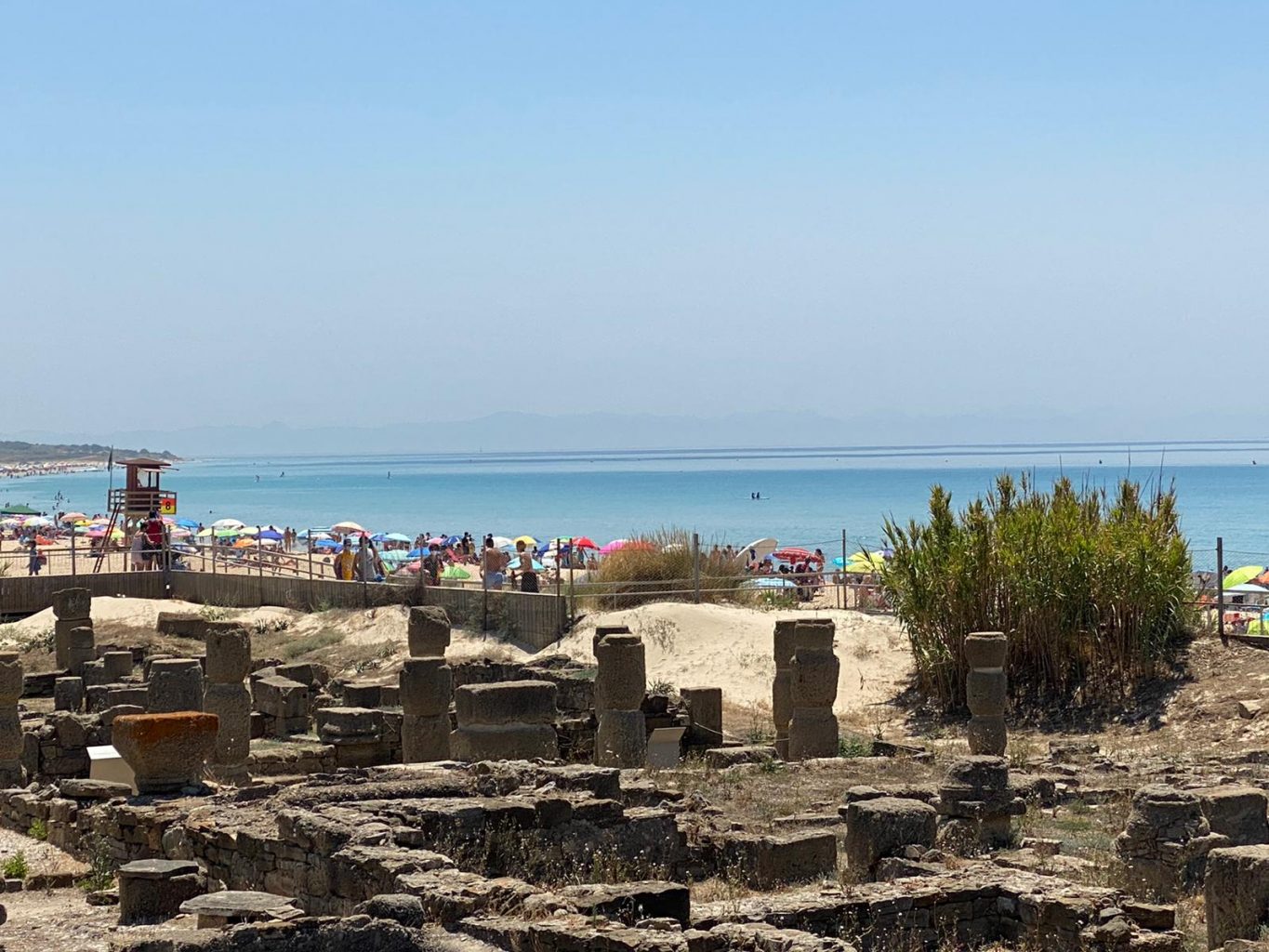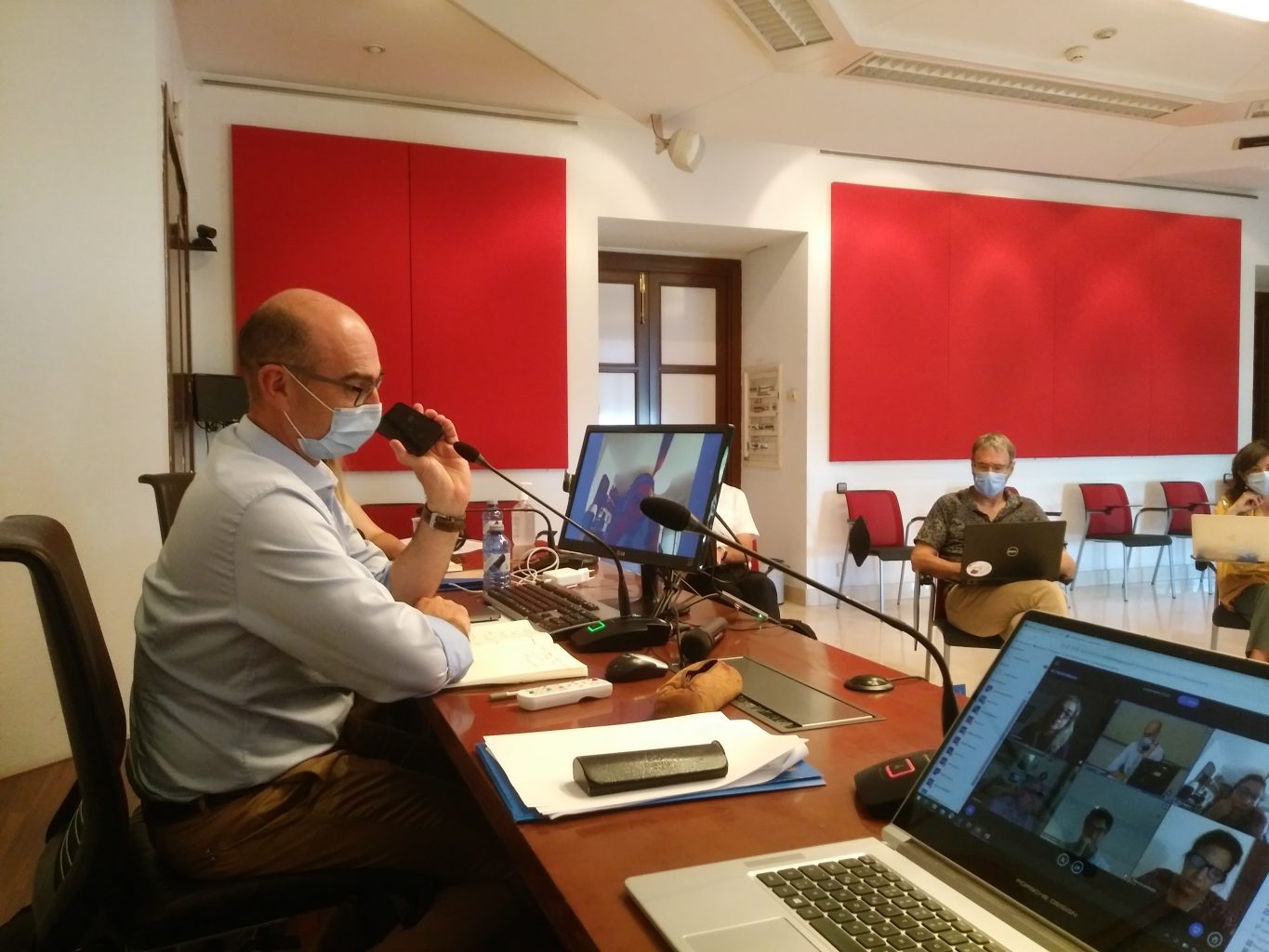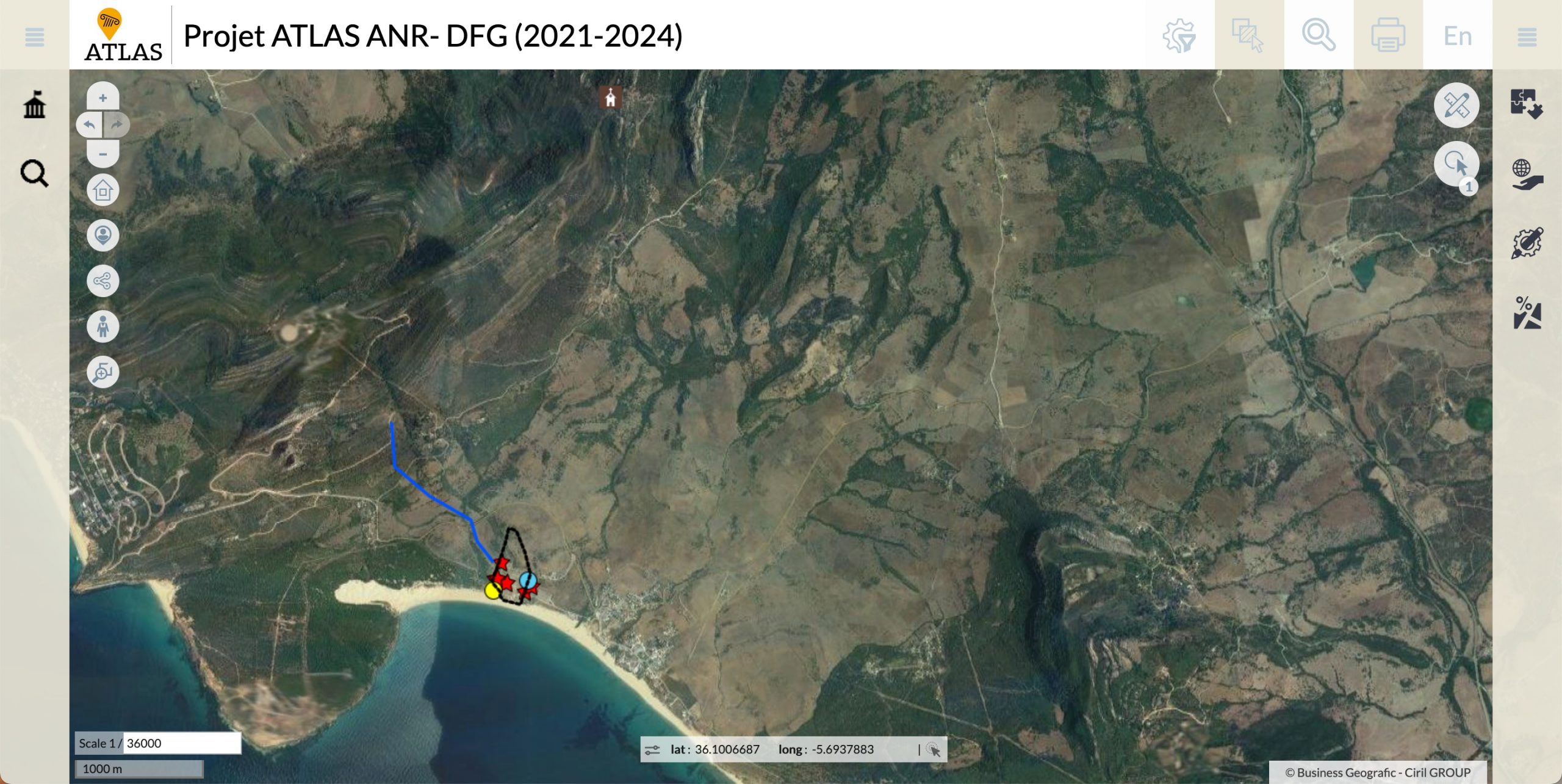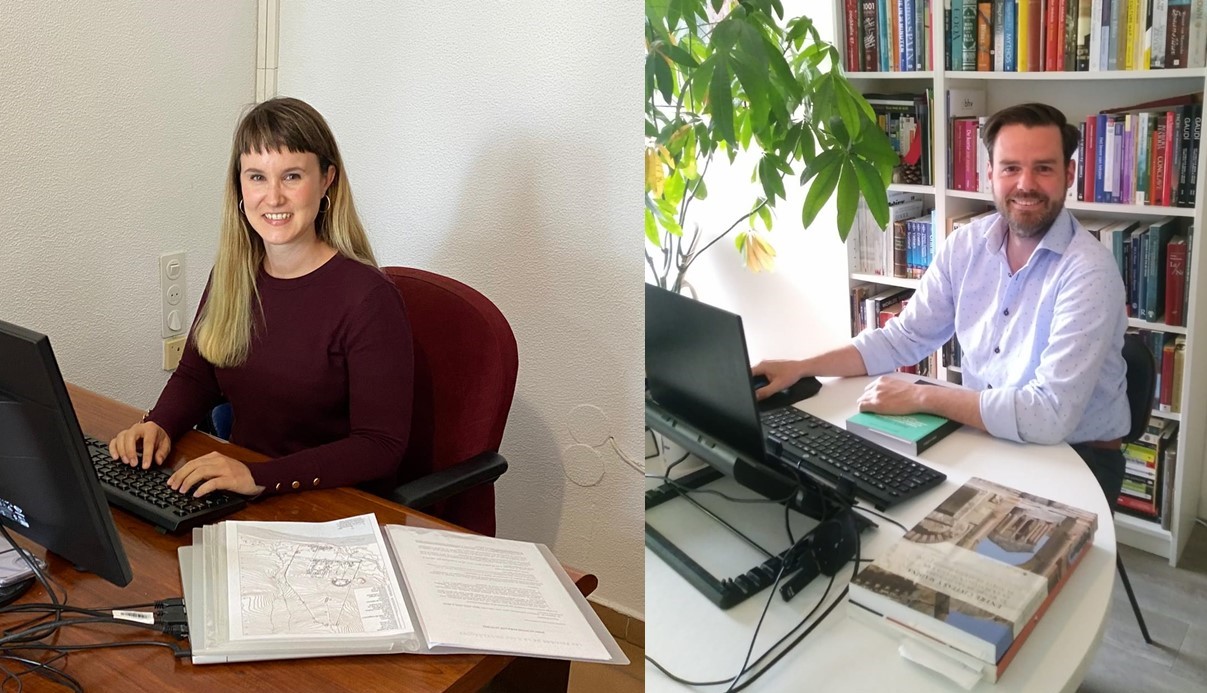Three years ago we started as post-docs in the ATLAS project. One of our tasks was writing this blog, and now we are writing our penultimate post about our experiences in the project and the plans for the future.
Team meetings, visits to cities and sites
So let’s start with the beginning in April 2021. As we all remember, this was still within the pandemic and it was impossible to travel. So our first meeting as the core ATLAS team was digital. We both remember being a bit anxious, one of the things was the language used in the project. Was the meeting going to be in French or in Spanish? And how are the new colleagues? We had met before in the academic world of conferences, but working together is a real different thing. The meeting, in Spanish, went really well and the plans for a real meeting in La Rochelle were made. As we wrote earlier, this meeting in La Rochelle was a great and weird opportunity to get to know each other better. The sushi dinner in a hotel room and the copious meal at Laurent’s, restaurants in la Rochelle were closed, were very good social events to get the team together and break the ice. Within a month we were already off on a good start.
In addition to La Rochelle, the ATLAS core team has been meeting in various parts of the Mediterranean, especially to get first-hand knowledge of some of our case study cities. Thus, in September of the same year, we were able to organise a visit to Mérida, also to meet with some of our project colleagues, renowned specialists in the history and archaeology of this city. This meeting was essential to request and obtain the necessary permits and data to produce the 3D reconstructions for our exhibition. And, at the same time, thanks to our colleagues from Emerita, we were able to enjoy detailed explanations of some of the most outstanding buildings of the late-antique city, as well as the magnificent pieces and inscriptions preserved in the Museo Nacional de Arte Romano.

Our next team meeting was already in March 2022, and on the southern shore of the Mediterranean. This time the four of us travelled to Tunisia, where we met our colleagues from the Institut National du Patrimoine, with whom we also agreed on permissions and data transmission to continue working on our travelling exhibition. There we were able to walk among the fascinating archaeological remains of ancient Carthage, but also to visit other sites such as Mactaris, included in the case studies of the project, or other sites of great interest, such as Zama Regia. Our Tunisian colleagues were certainly excellent hosts and guides, and even took us to taste the real local gastronomy in the heart of the Tunisian medina.

In December 2022, Sabine and Pieter presented a paper at the Africa Romana conference, the paper co-authored with Stefan Ardeleanu should be out soon! This conference took place at Sbeitla, what was once the Roman city of Sufetula. Visiting this amazing site gave us the opportunity to get a grasp of another African city, unfortunately not one of our case studies. Luckily we were able to do an autopsy of a case study city during this visit. As part of the conference programme a visit to Ammaedara was planned. This visit did not only allow us to see Ammaedara, but also gave the opportunity to speak to the two most relevant researchers of this site: François Baratte and Mohamed ben Nejma. Sabine took the chance to ask François Baratte her pressing questions on the site. The contact with Mohamed ben Nejma led to his visit at the RomanIslam Center at Hamburg where he and Pieter collaborated to create the map for Ammaedara.
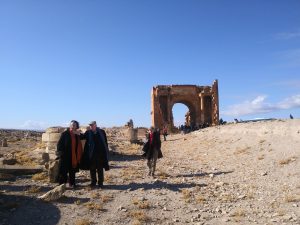
Studying Late Antiquity
But beyond these visits and team meetings, obviously our main focus has been studying urban phenomena in Late Antiquity through our ten case studies. We have already explained in other blogs how we work and how we incorporate the enormous amount of epigraphic and archaeological information in our particular Geographic Information System in web format and open access (WebSIG). This exhaustive work has undoubtedly allowed us to exponentially expand our knowledge of this complex and interesting period, and also to broaden our geographical focus to regions that we had not had the opportunity to work on directly before. We can now say that we have a good command of the existing bibliography and a good knowledge of the historiography and the state of the art of our cases and regions of study. Moreover, by working together with a specialist in archaeology and a specialist in epigraphy, we have been able to combine these two fields and bring them together in WebSIG in a way that has never been done before. While this interdisciplinary approach is the aim of most projects, it often goes no further than one specialist reading sources from other disciplines. In this case, Ada and Pieter have not only worked together but also discussed issues from different points of view, which has led to new perspectives and raised questions that, for the moment, seem unsolvable (e.g. dating issues in archaeology and epigraphy; i.e. the swamp of circular argumentation…).
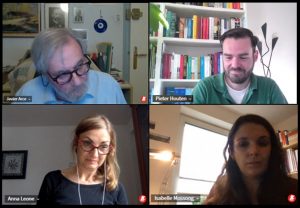
As such the postdocs have indeed brought interdisciplinary work on another level, but this has not been the only teamwork we have done, as we also have the different research groups. These groups, made up of people from many different backgrounds and with different specialisations, have met regularly to discuss and deepen the study of specific topics. Admittedly, the epigraphy group is not so interdisciplinary, since it is simply made up of the project’s epigraphers, but here lies the other novelty of the project: bringing together Hispanists and Africanists. By studying these two regions together we can see some striking similarities and exciting differences. Obviously, the combination of people with different knowledge and backgrounds has also led to interesting intercultural exchanges. It has opened our eyes to new perspectives and changing points of view, as well as triggering discussions resulting from our different ways of working. Sometimes a certain diplomacy has been necessary to keep going. However, this international, intercultural and interdisciplinary way of working is very rewarding and we look forward to continuing to collaborate with our colleagues.
Yearly workshops
The key to these collaborations has undoubtedly been the research groups we formed after our first colloquium in Madrid. With eight groups of different sizes, depending on the popularity of each topic, we have had around thirty researchers participating in our project. But as most of them have their own projects on the case study cities, or on the topics of the research groups, it has not always been easy to find time to meet in their busy schedules. So a good way to organise this has been the annual workshops, which have set a strict deadline while giving each group the opportunity to present and discuss work in progress. It is true that, despite the tight deadlines, we have not always managed to organise ourselves in the most efficient way, but still the groups presented novel angles of study and questions at each annual colloquium that have opened discussion for the whole group. We are sure that our next colloquium in Madrid will also open up fascinating exchanges on Late Antique cities!
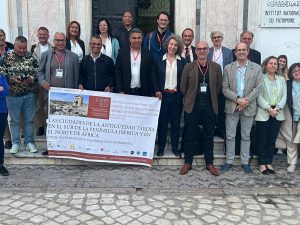
All these group meetings and annual colloquia have been a slow-burning process that will soon bear fruit. As we have already explained, these collaborations and collective debates will be collected in a publication, the ATLAS Companion. In the last few months the work has been intense and the groups have been more active than ever in drafting the different chapters that will make up this volume. In addition, Pieter has been elaborating, advised by our specialists and helped by the Hamburg students, the many maps that will accompany the texts and that will undoubtedly be one of the main outputs of our project. If you are curious, you can already find some interesting maps in our Maps-to-go section. And we will keep you informed about the development of our Companion through our social media, so don’t hesitate to follow us if you haven’t already done so!
Coffee and blogs
Along with all this, Pieter and Ada decided already at the beginning of the project that it would be a good idea to meet on a weekly basis, especially since ATLAS has different headquarters and each of us works in a different one. So every week since the start we have organised what we call “online coffees”, during which we have mainly planned and prepared the content for our social media and blog. Organisation in this sense has been key and of course there has been no shortage of extensive shared spreadsheets where we have been adding week by week the ideas for X (at the time still Twitter) or our website. And while it is true that the amount of work required for these forms of scientific dissemination is quite high, it is equally fun to think about how we can reach you, our readers and project members. In addition, these weekly coffees have allowed us to chat in a more relaxed way, with a coffee (or tea) in our hands, about the project and also about our plans for the future.
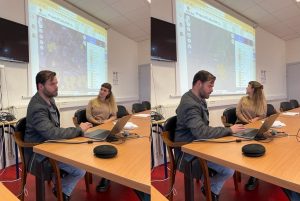
Future plans
Working in this international project has taught us quite a bit. Of course a load on Late Antiquity, but a lot more on cultural interactions and people skills. It was a really nice experience to see four different academic traditions (Spanish, French, Tunisian and German) come together and bring forth the best they all have to offer. With this new baggage we have been and are looking for future opportunities. Ada has some scolding hot irons in the fire, fingers crossed this will work out. Pieter will leave academia to teach Latin at the school in the Dutch town where he lives with his family. However, one does not simply leave ATLAS… We guess you might see some publications or maps focussing on Late Antiquity in Spain and Tunisia by our hands in the future. And there is rumour of an ATLAS 2.0, as such it is not “fare well”, but “see you soon”!
